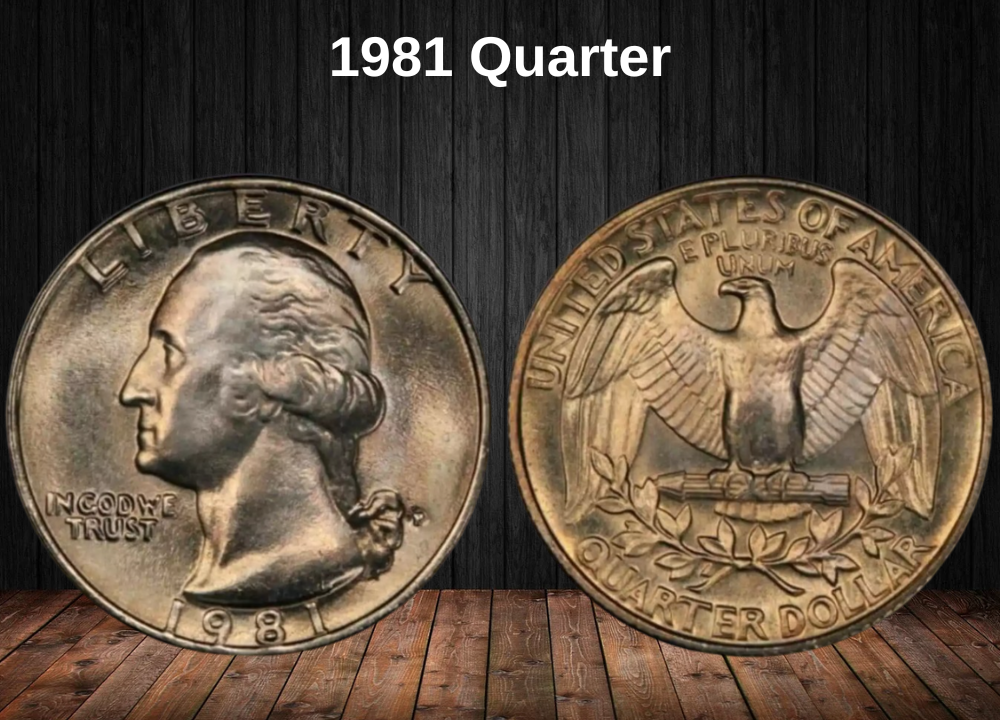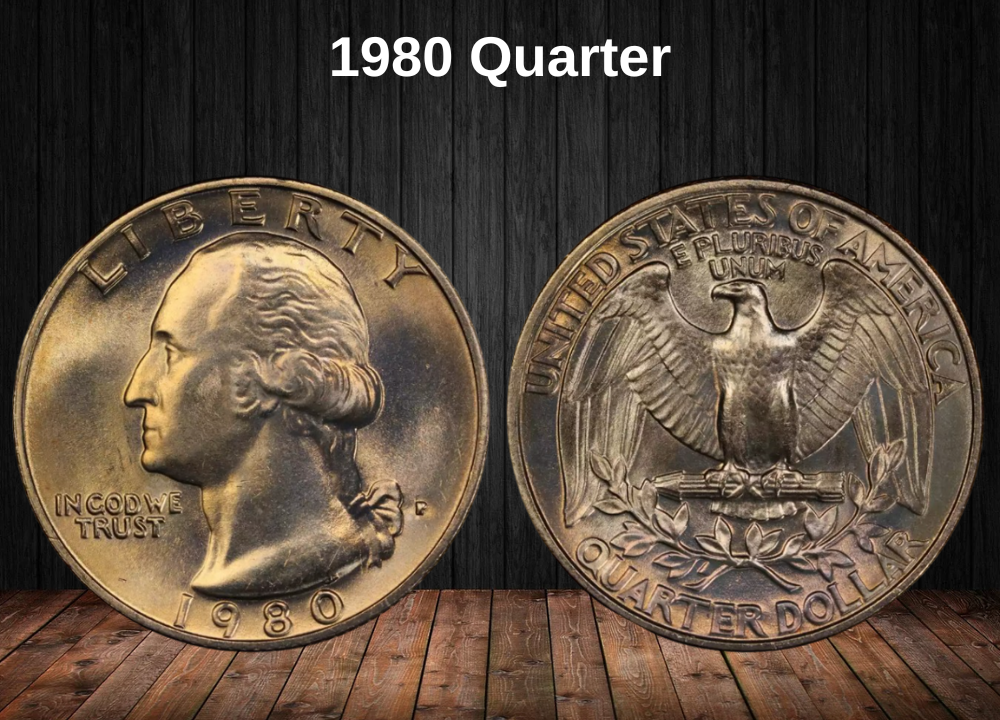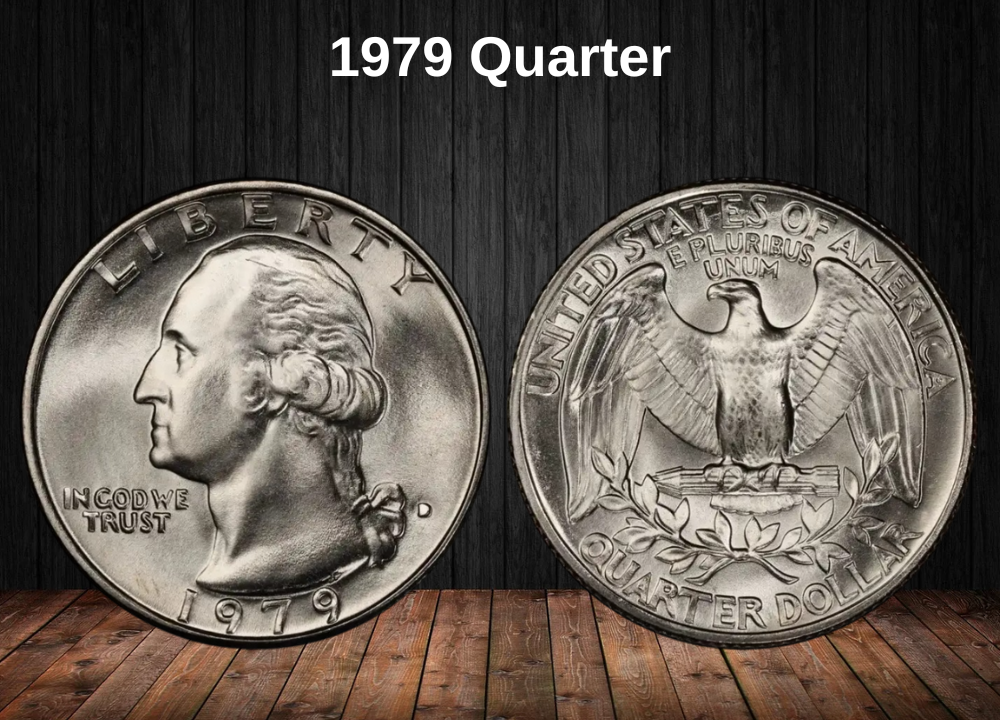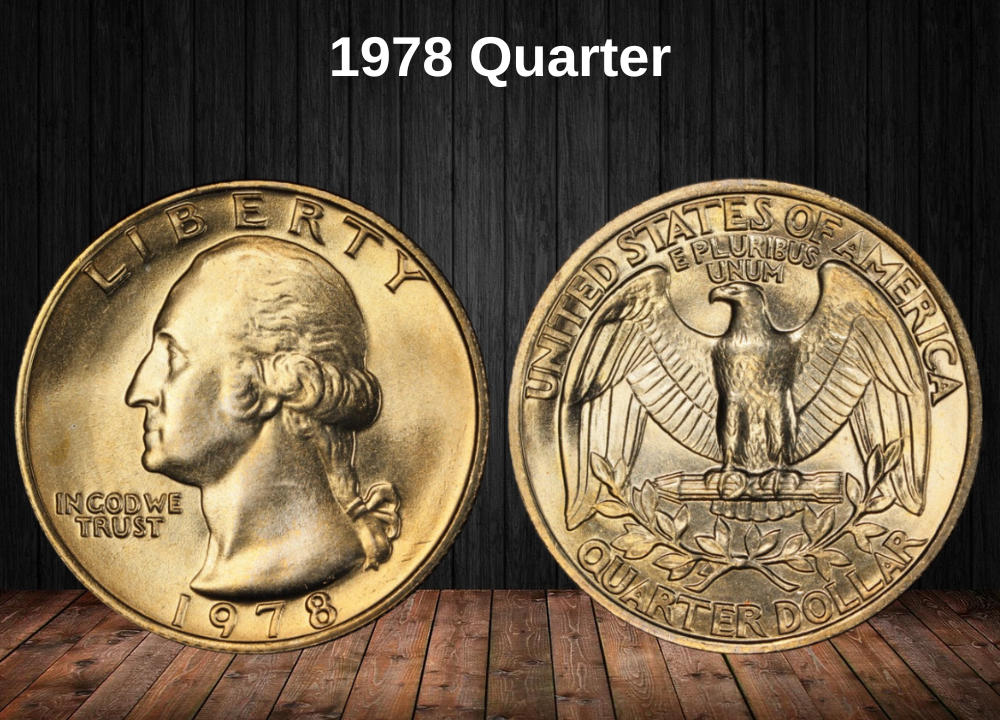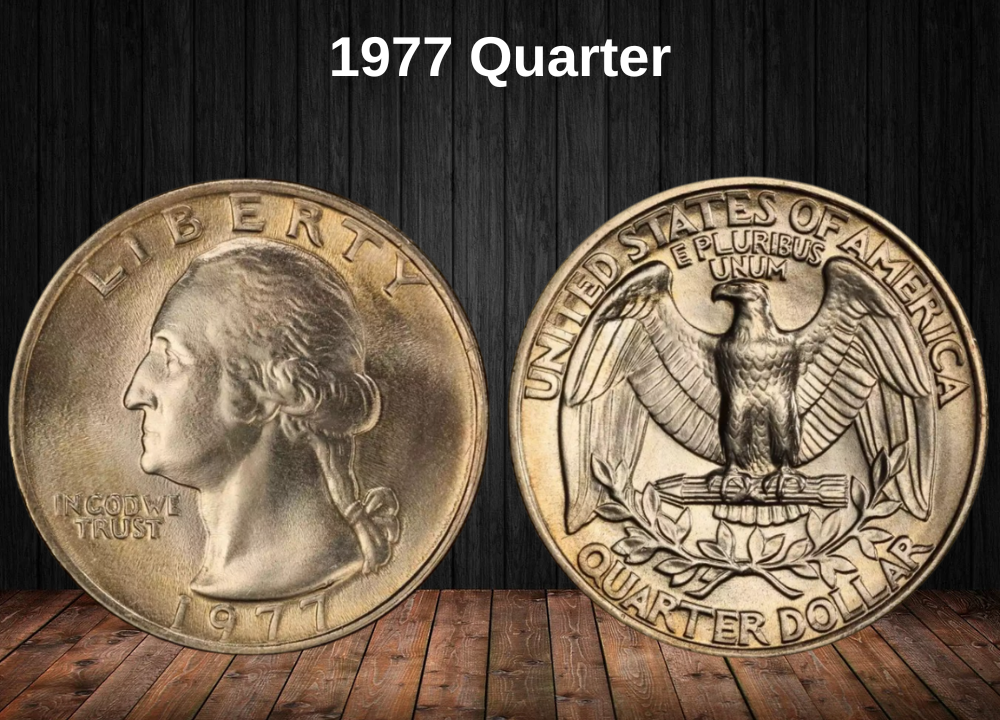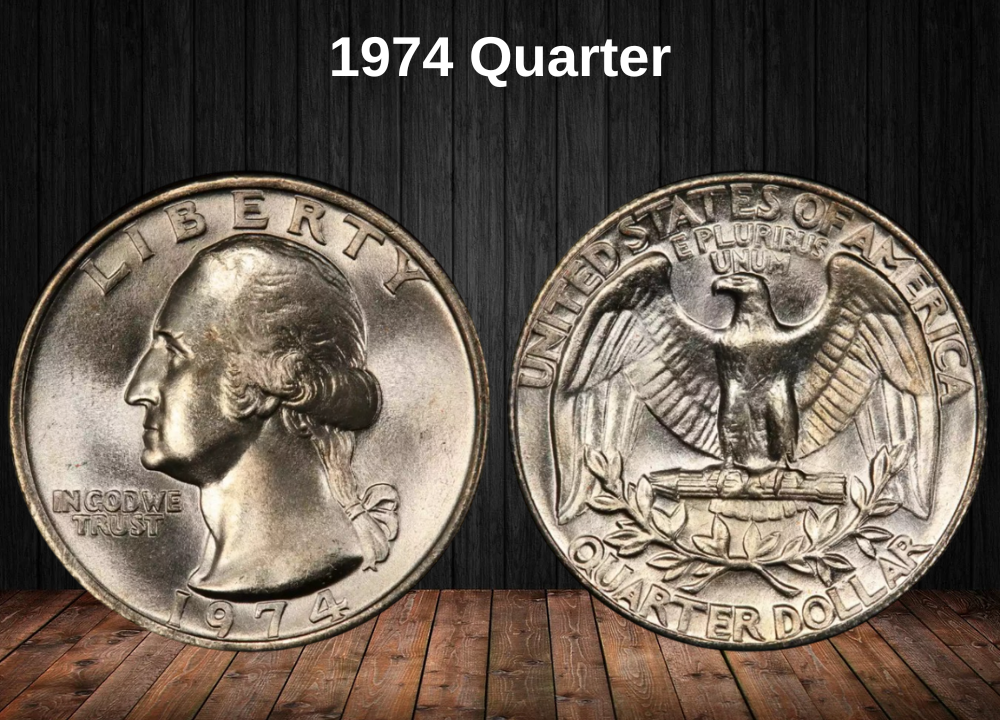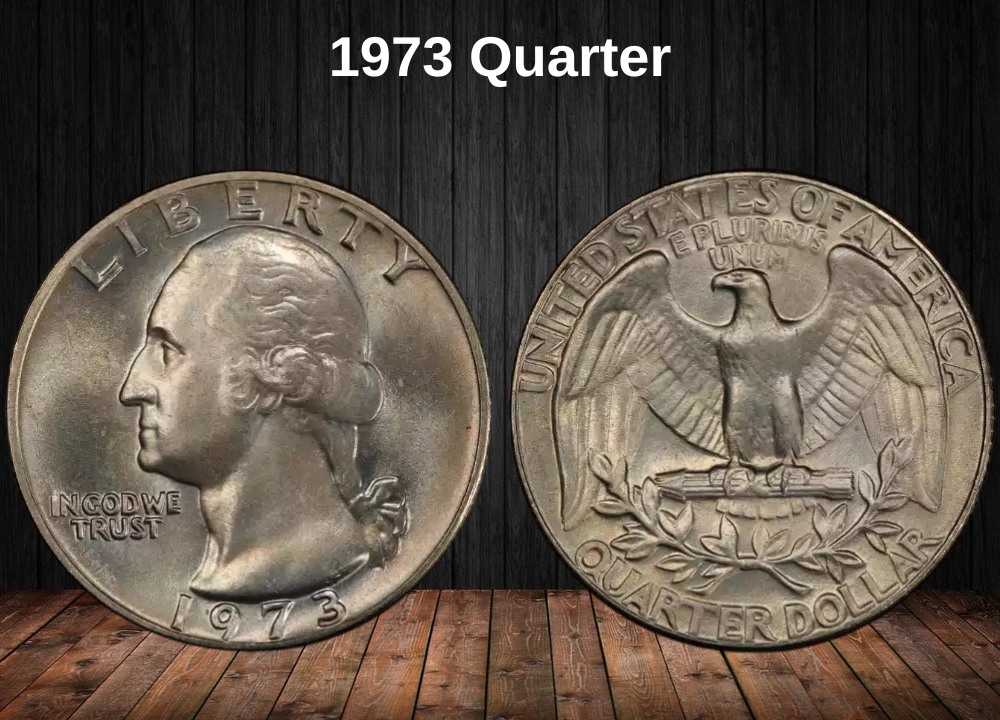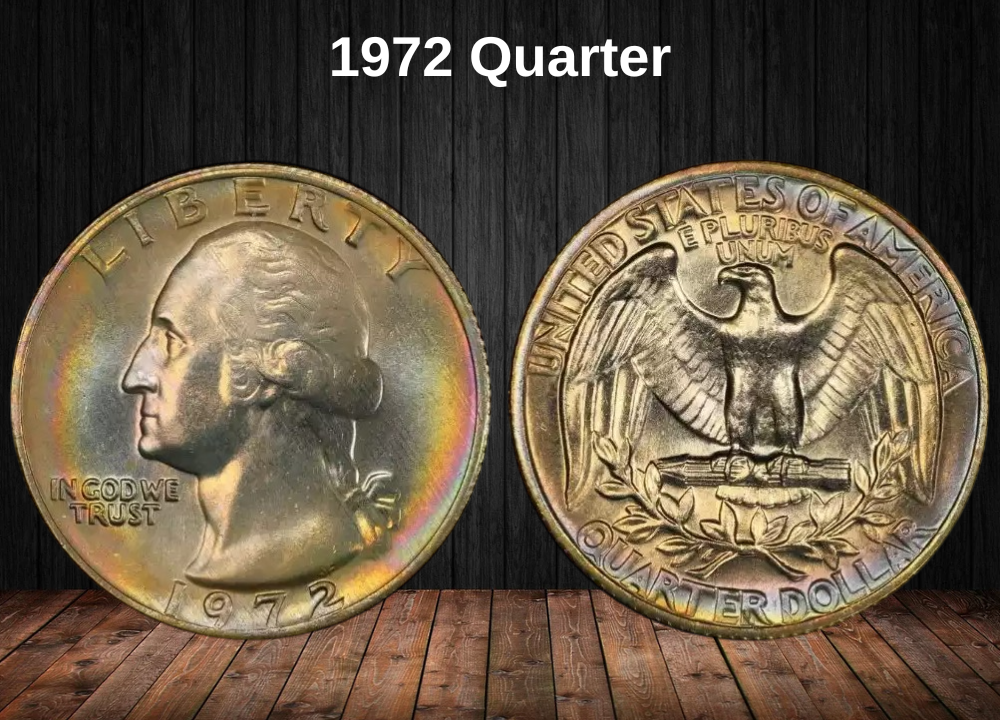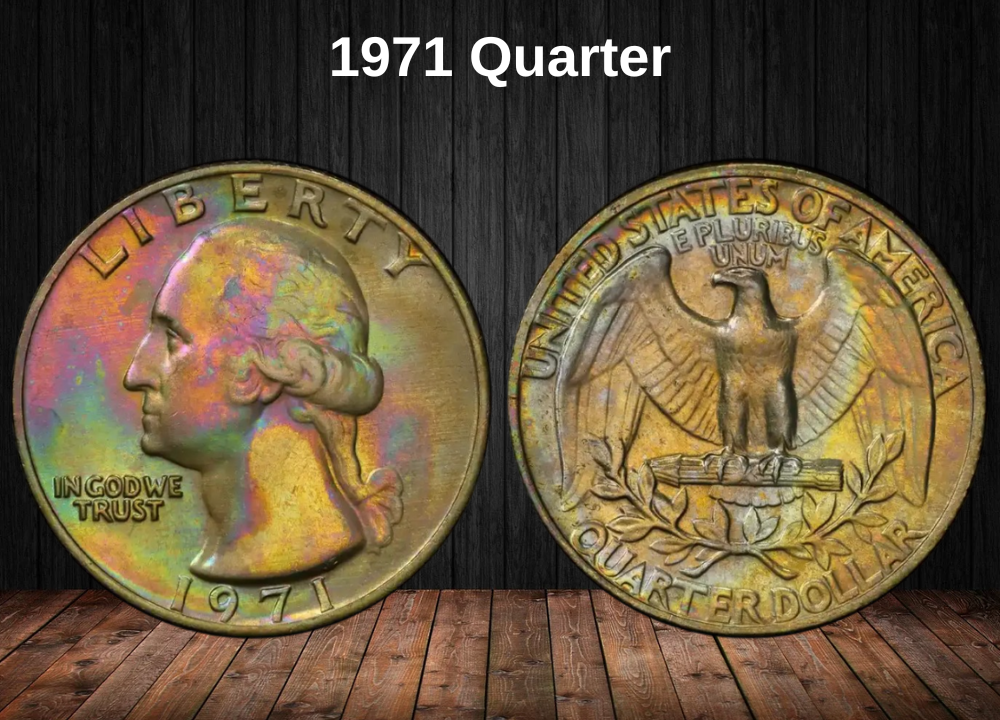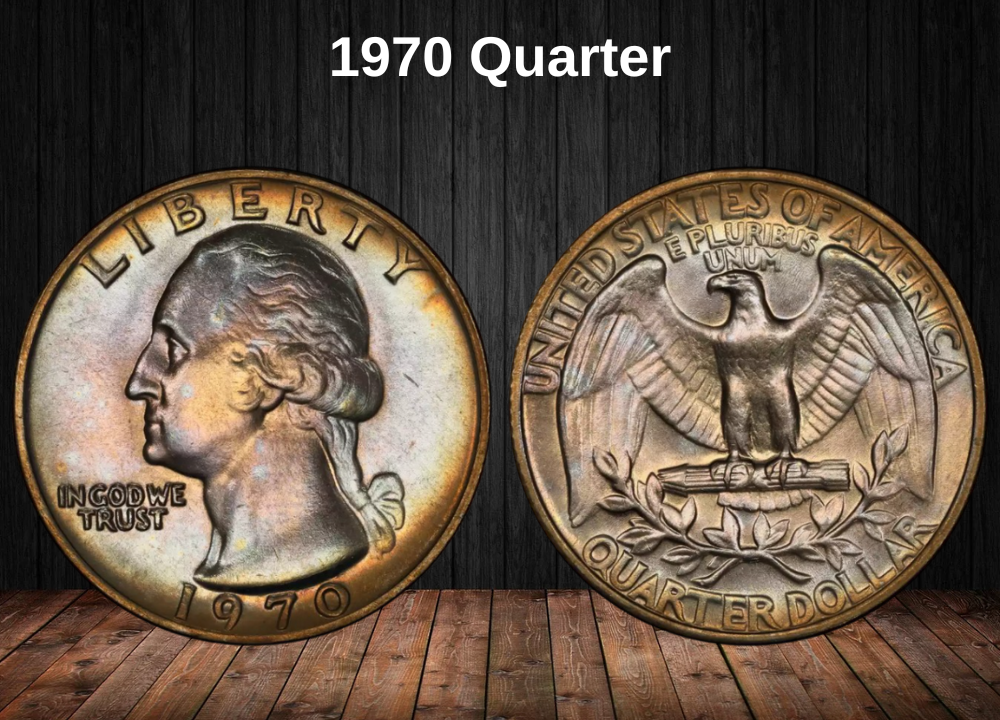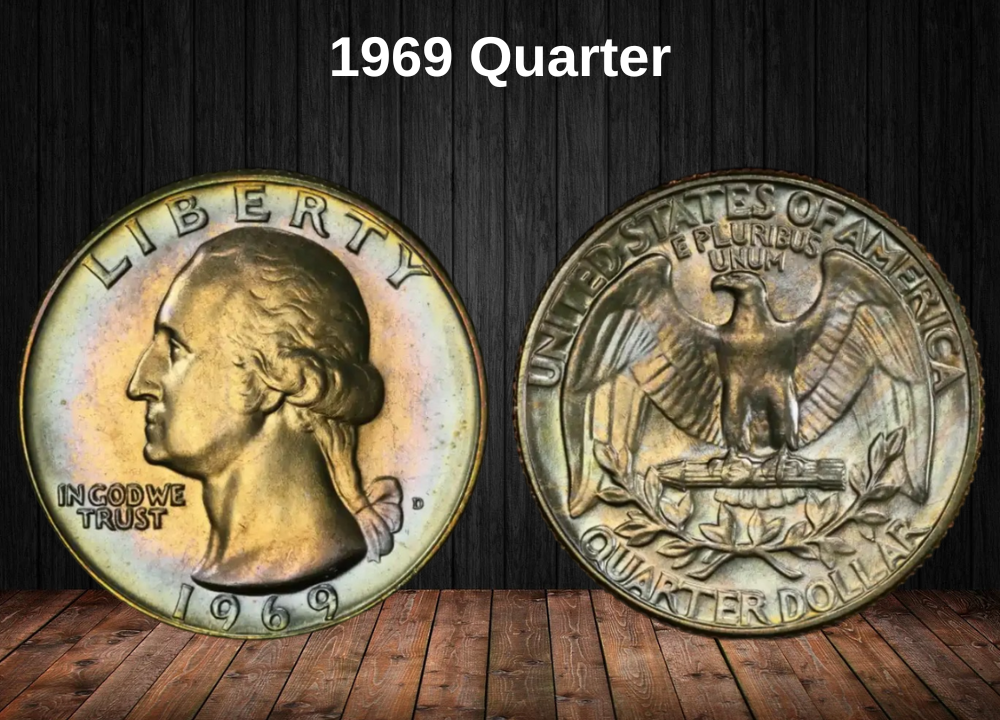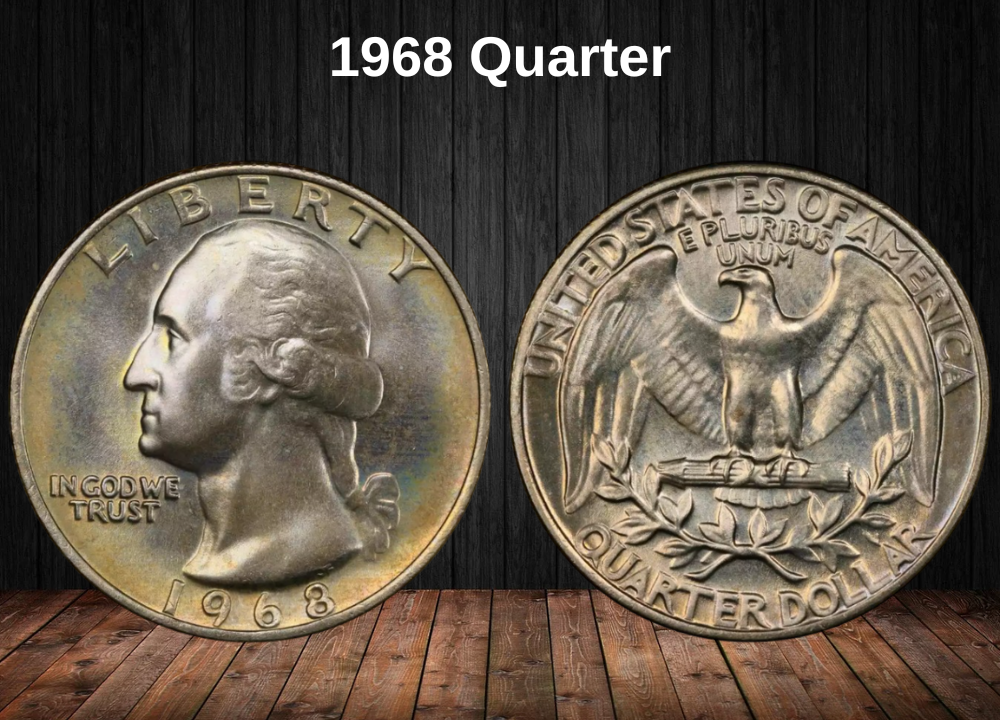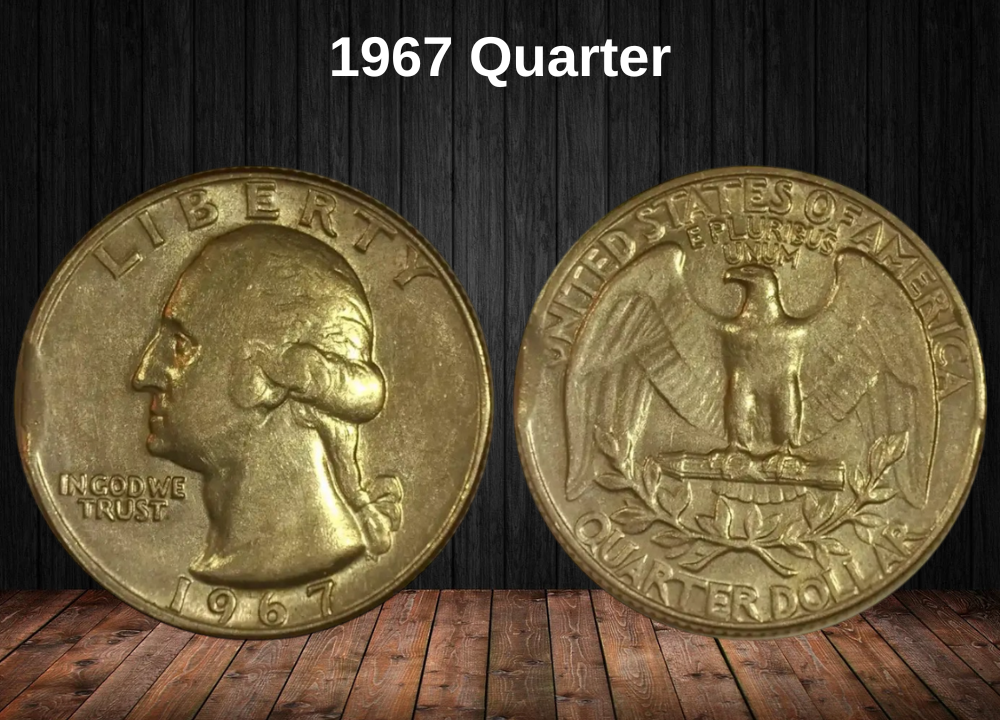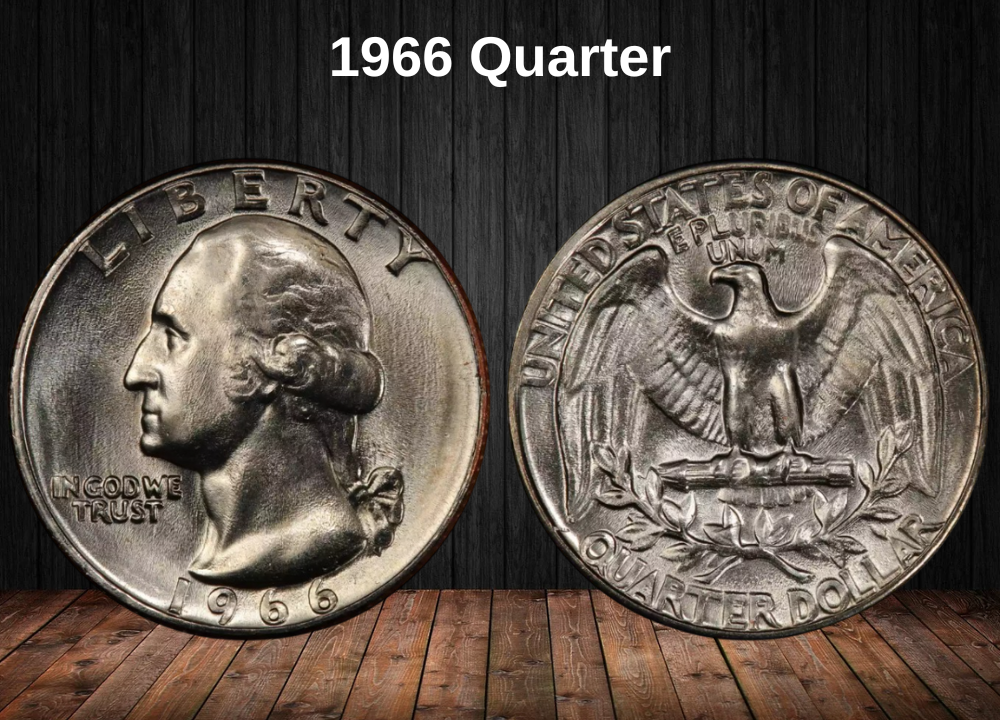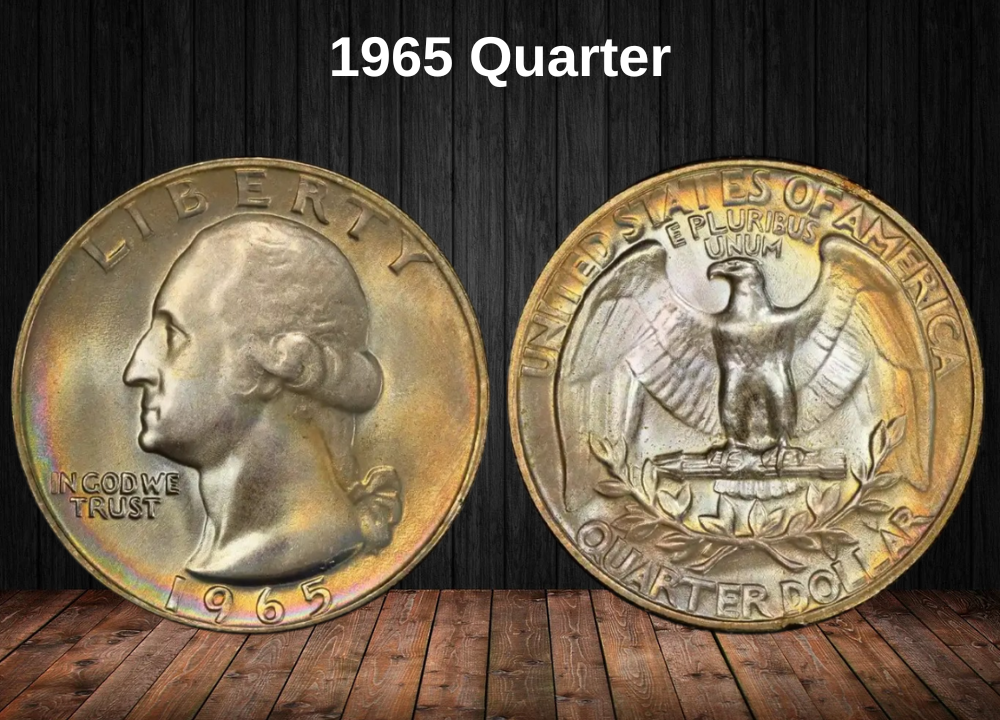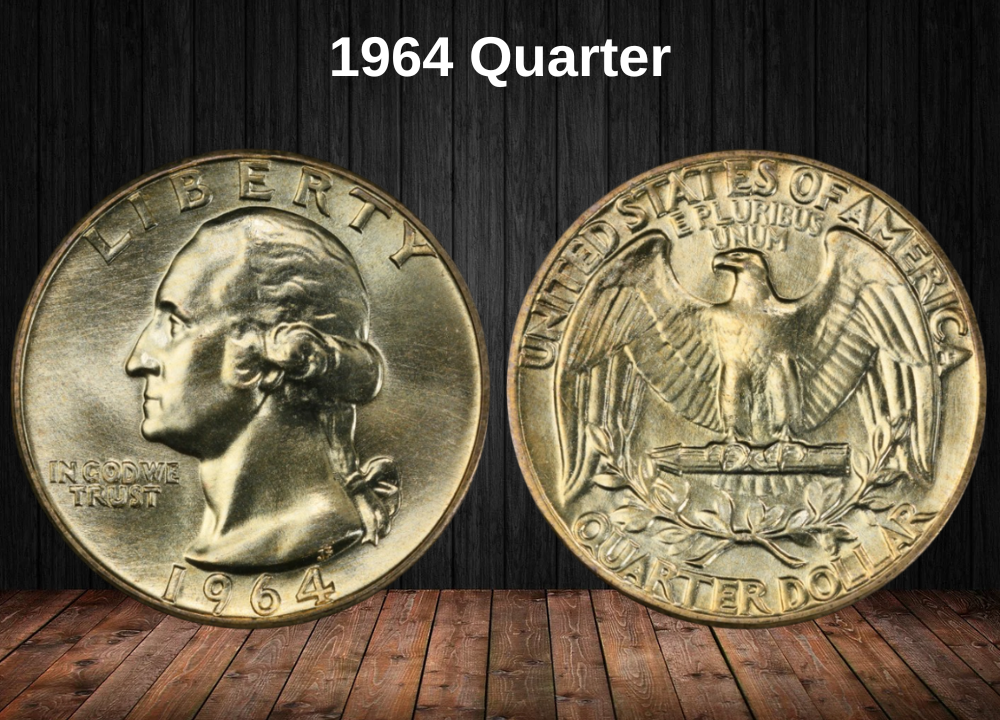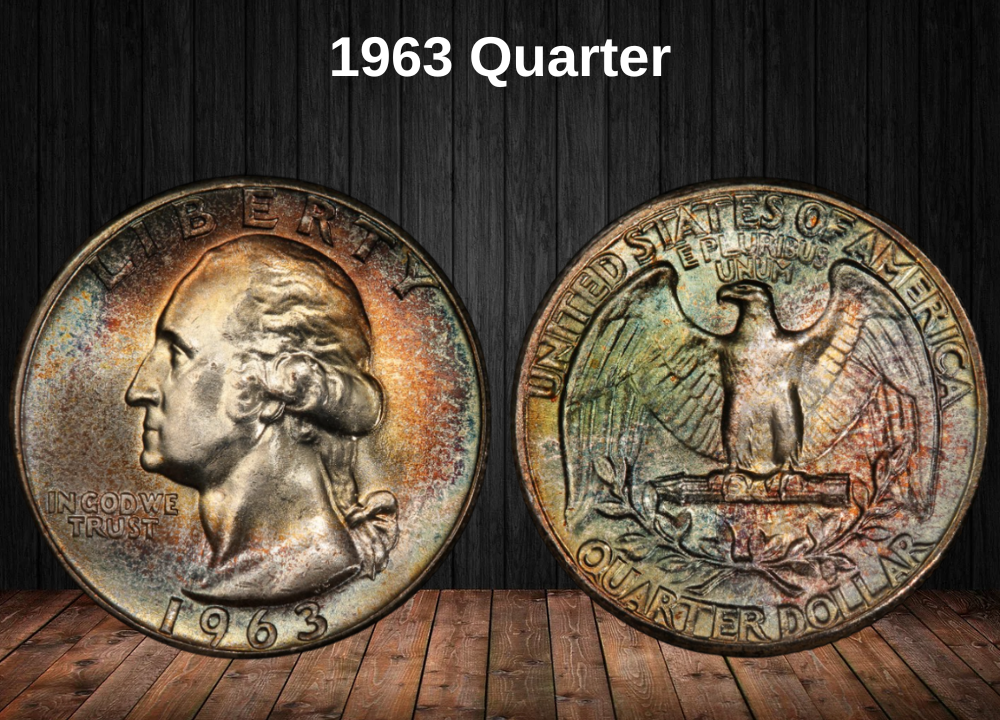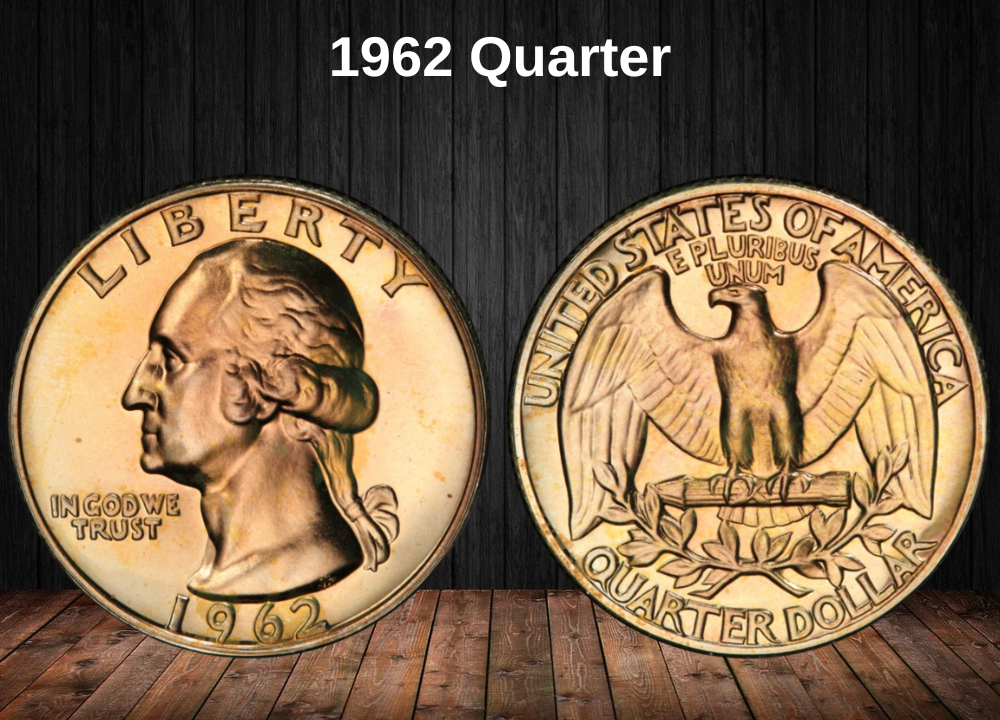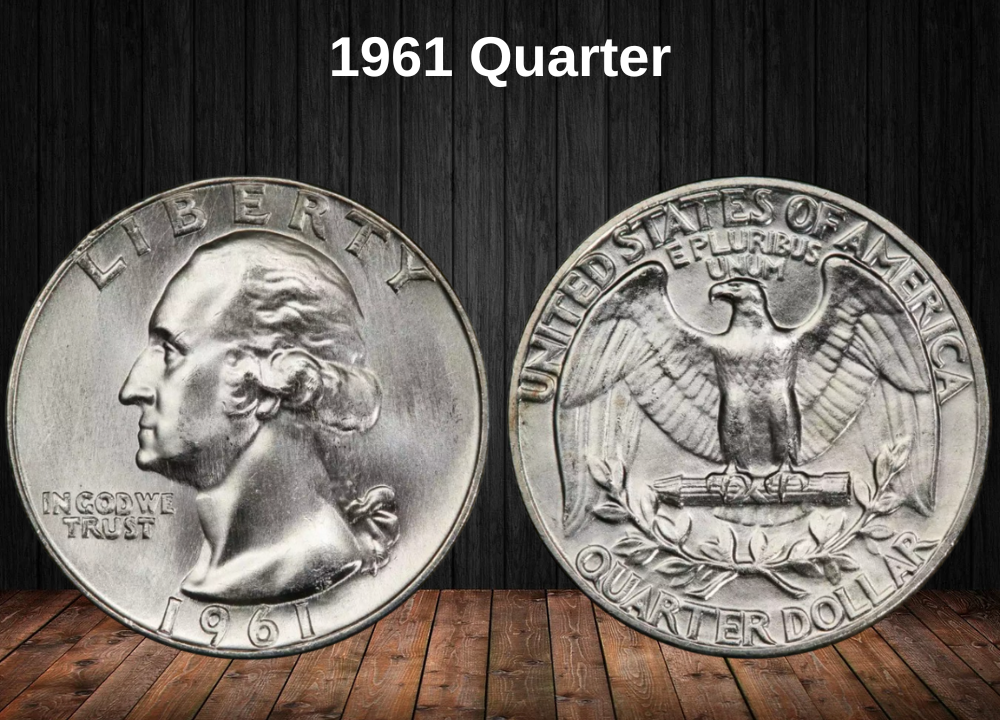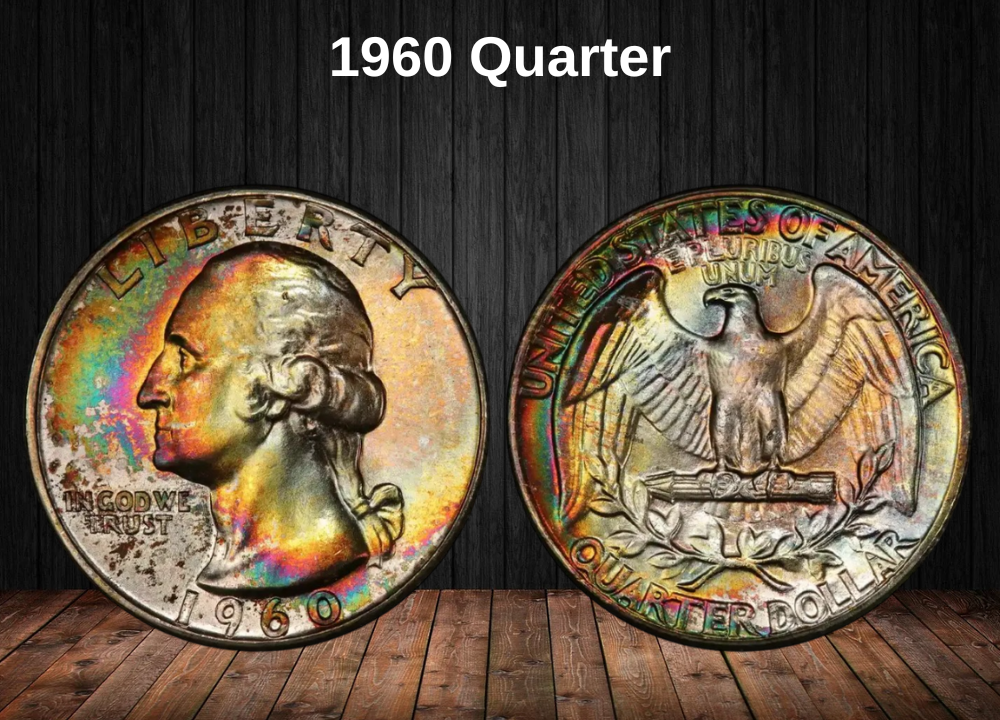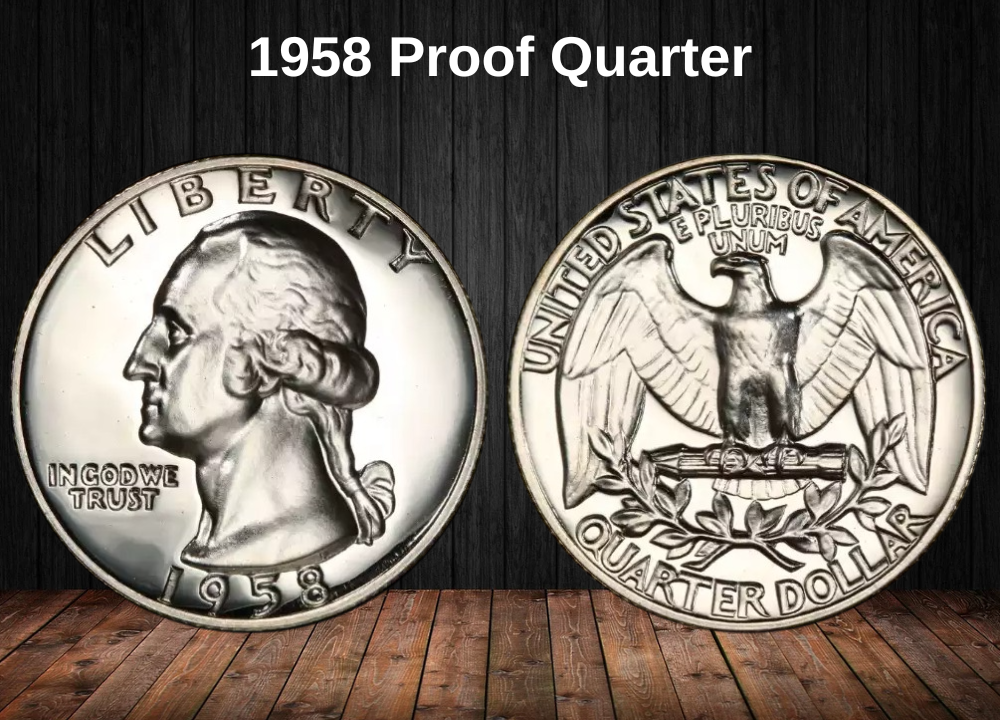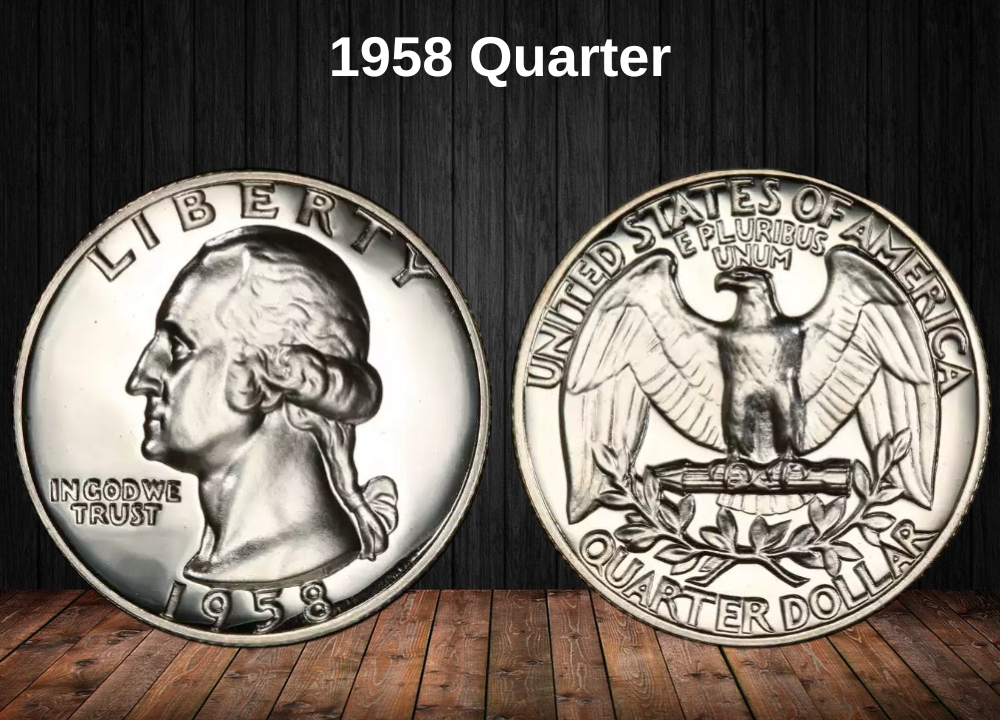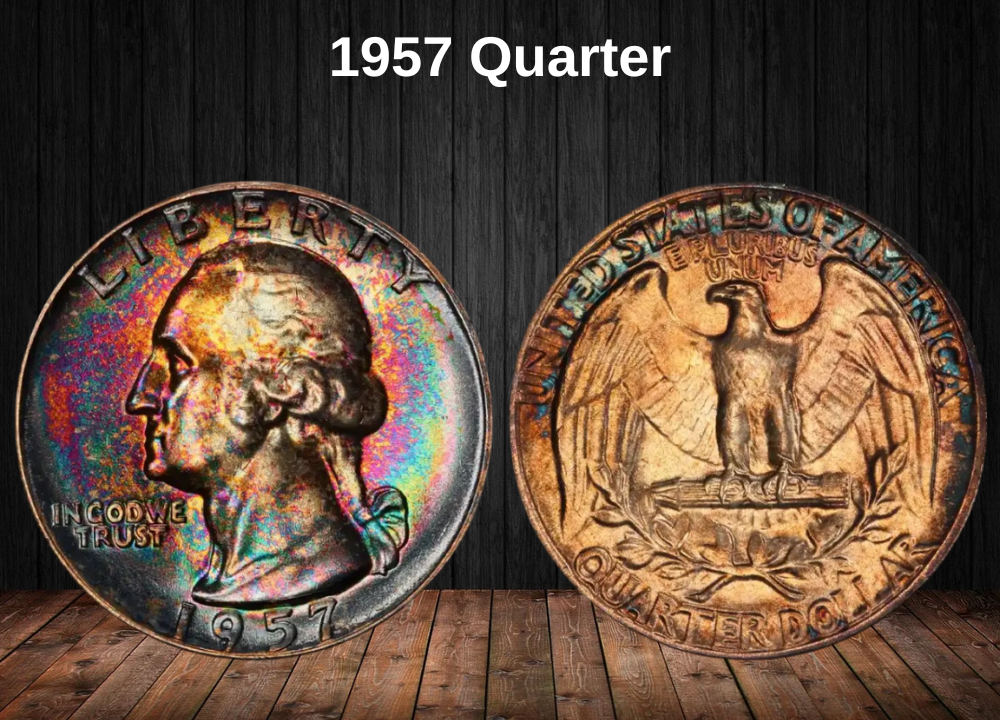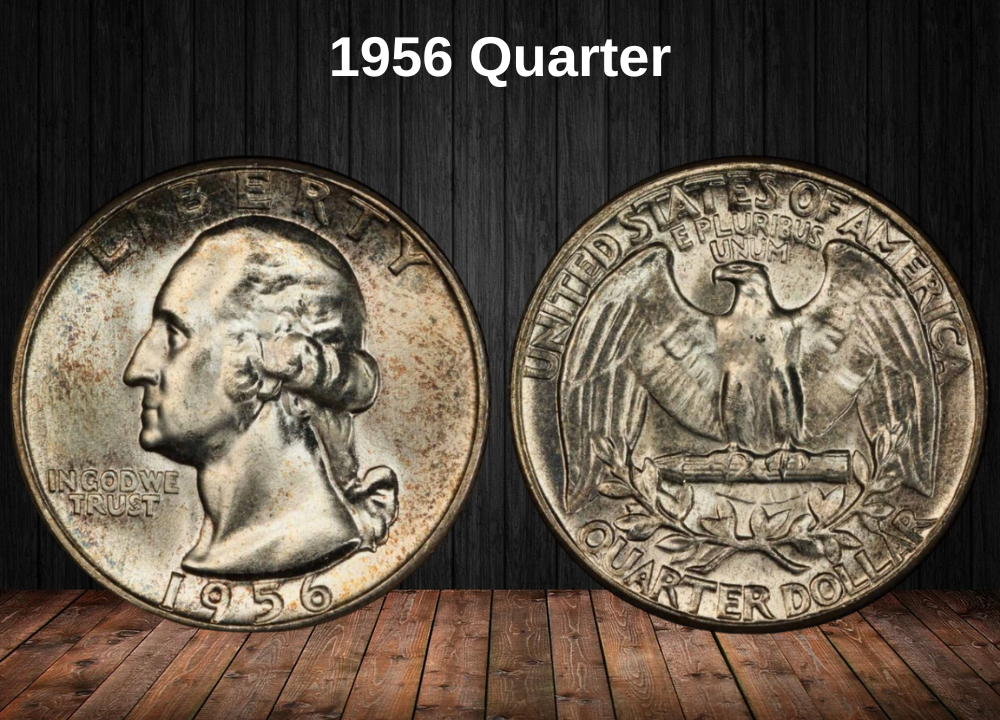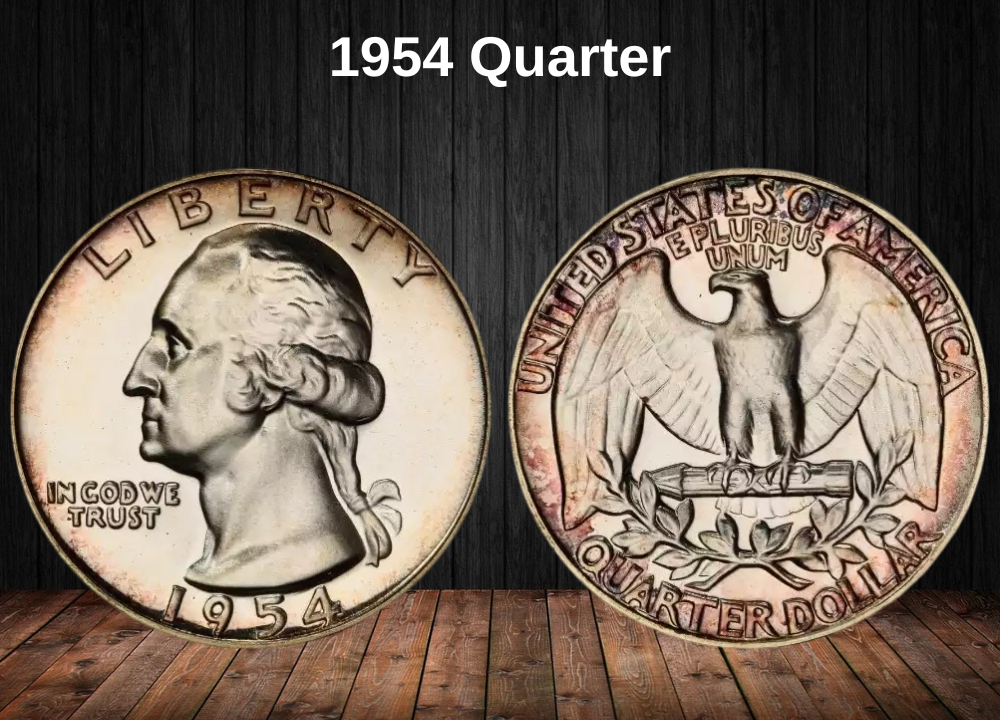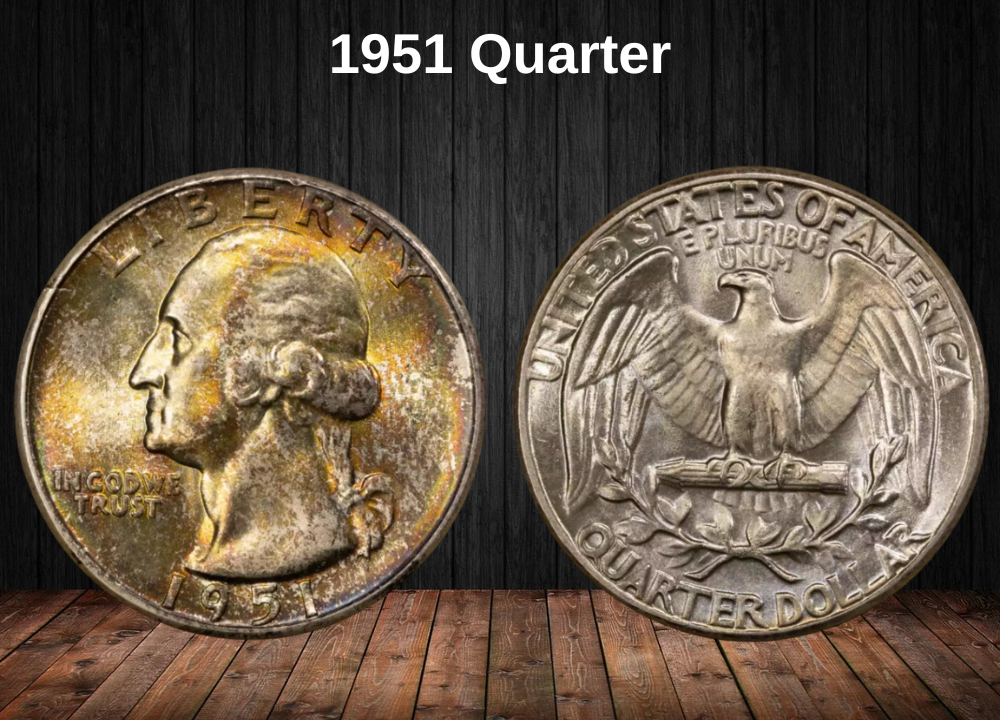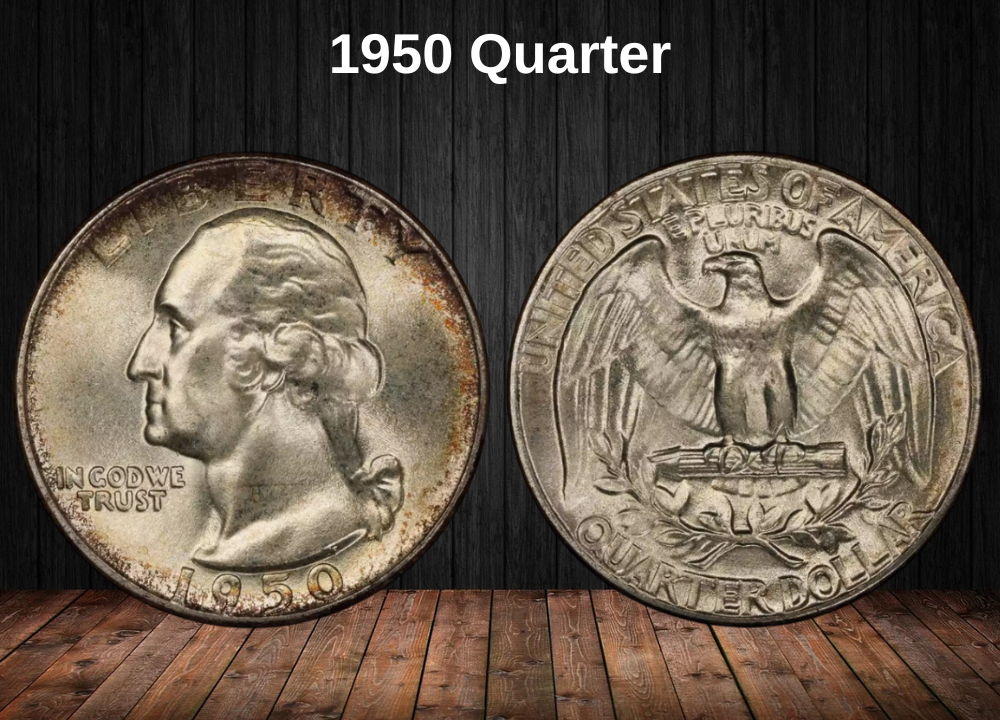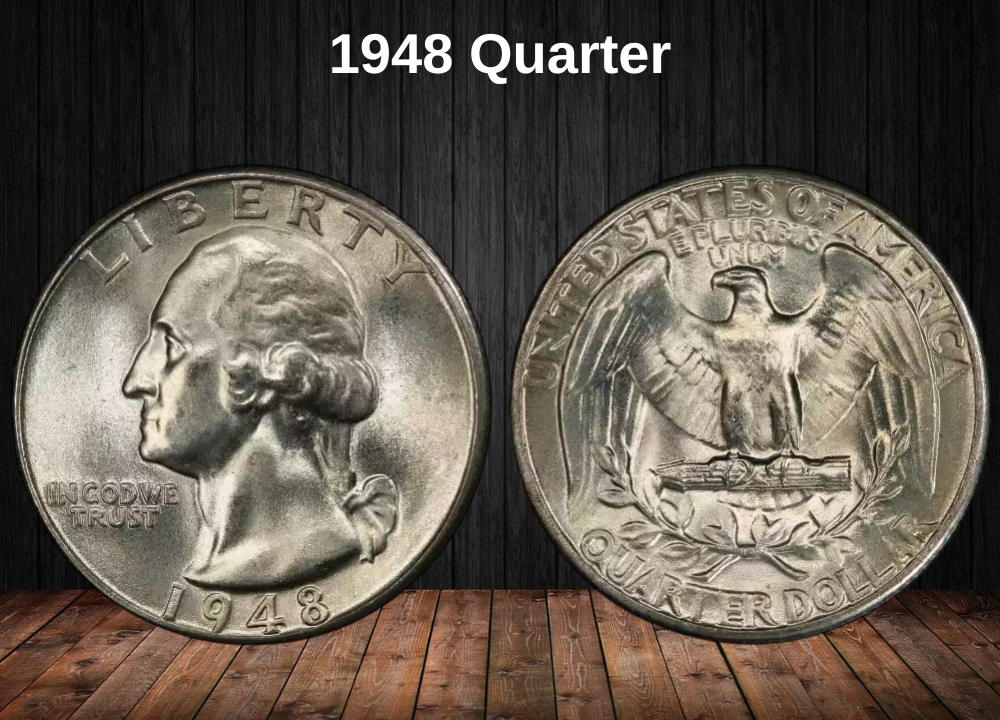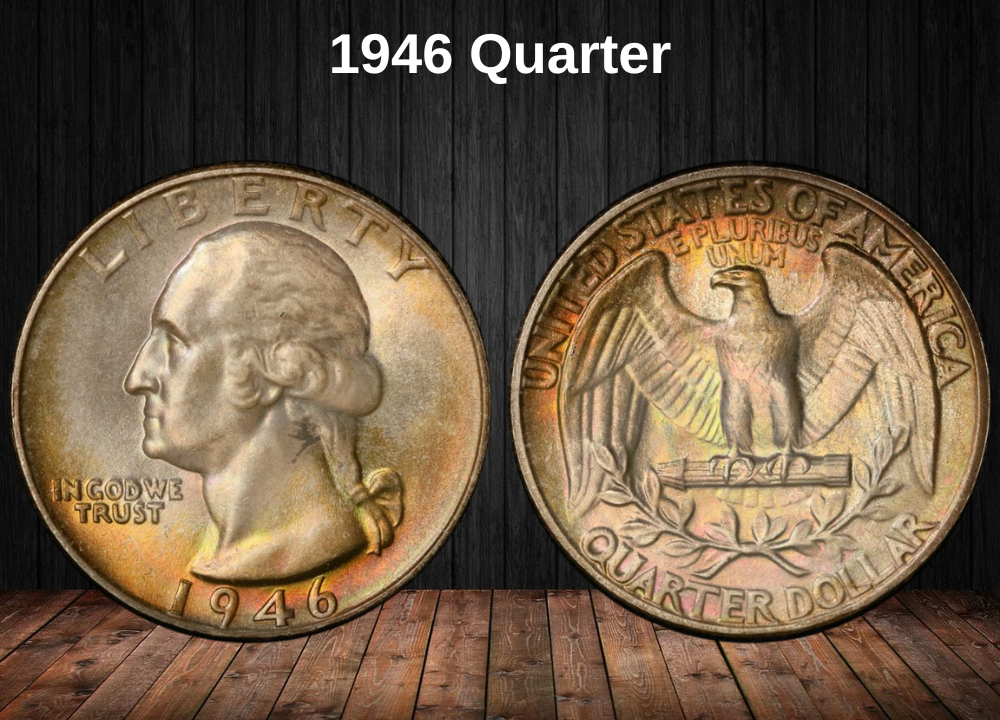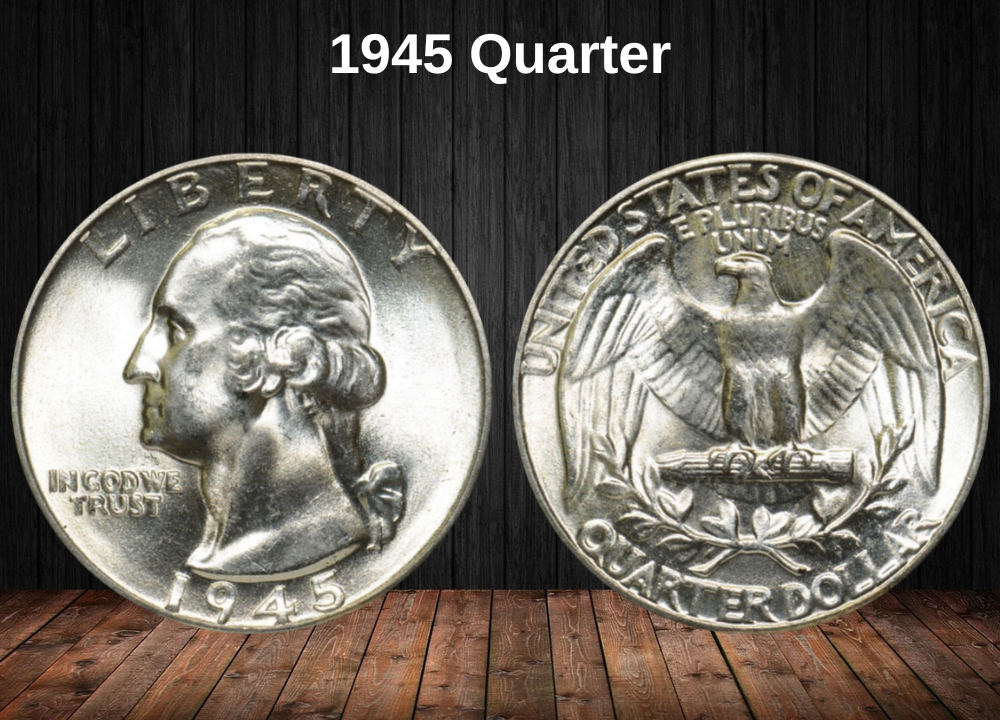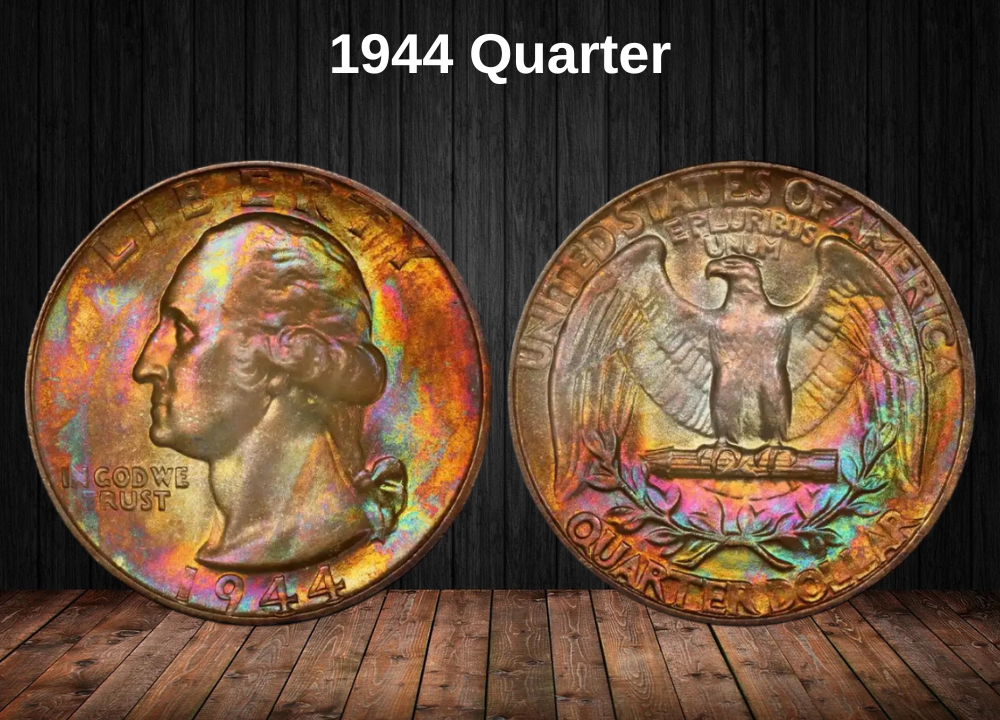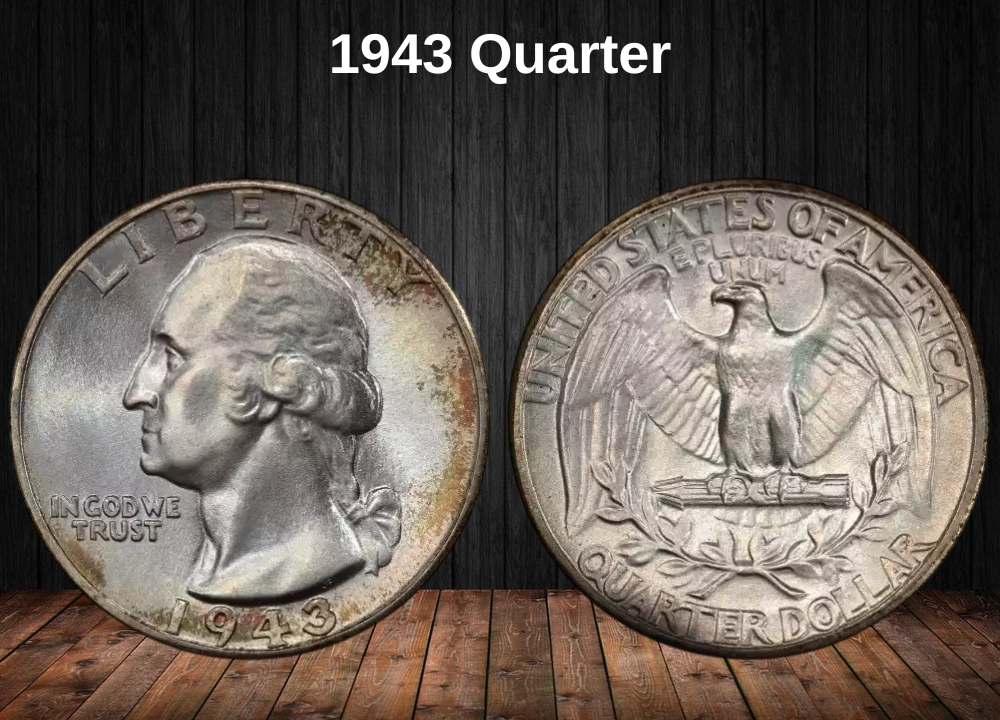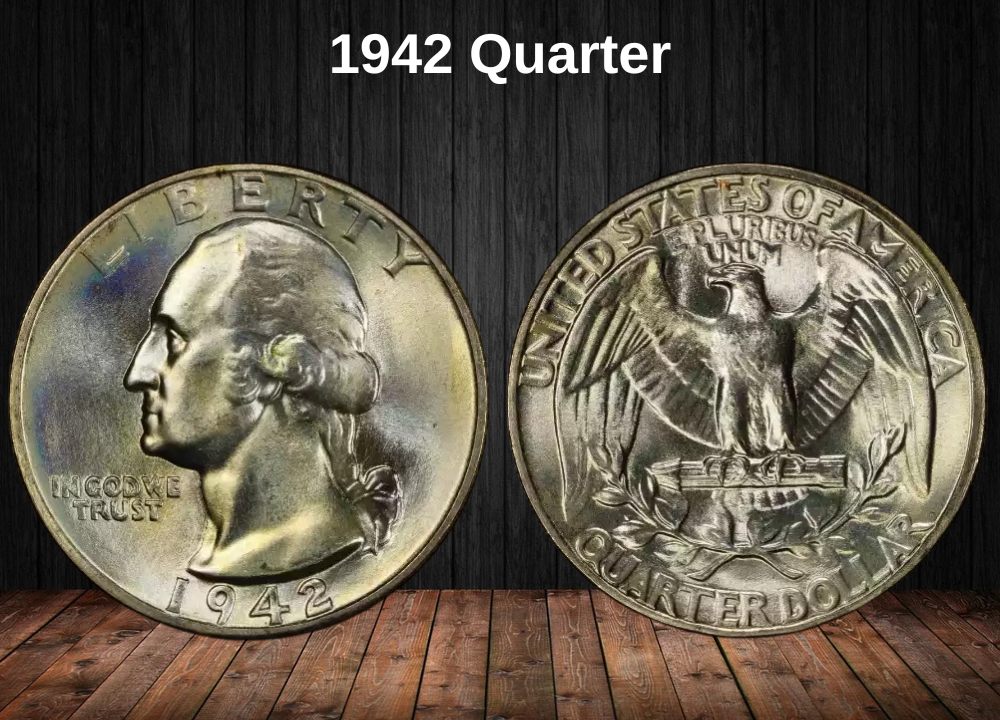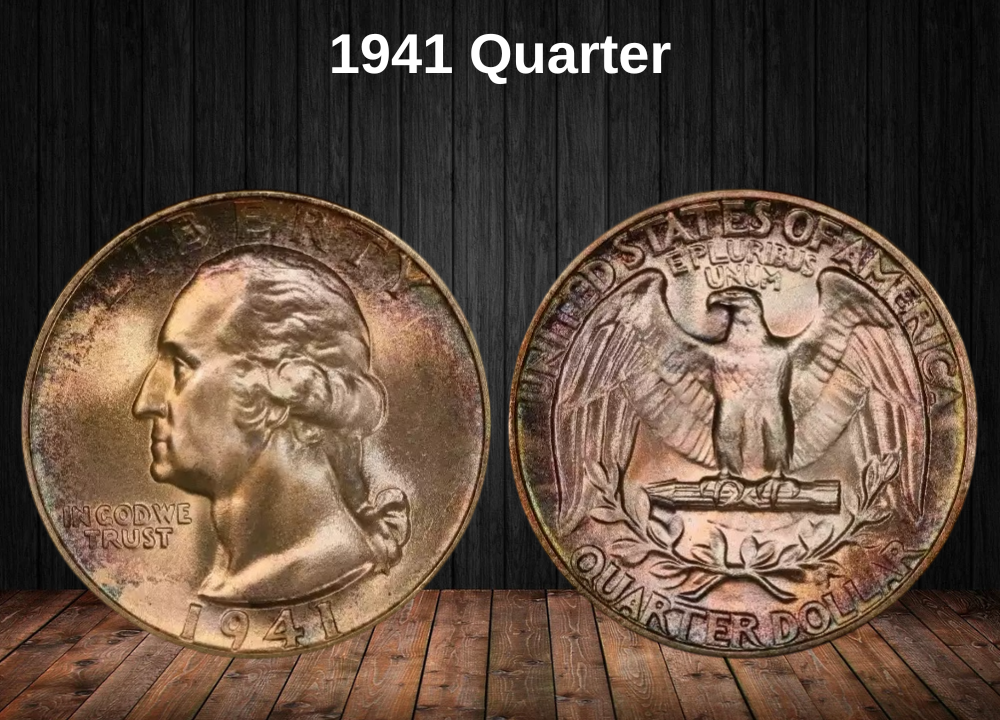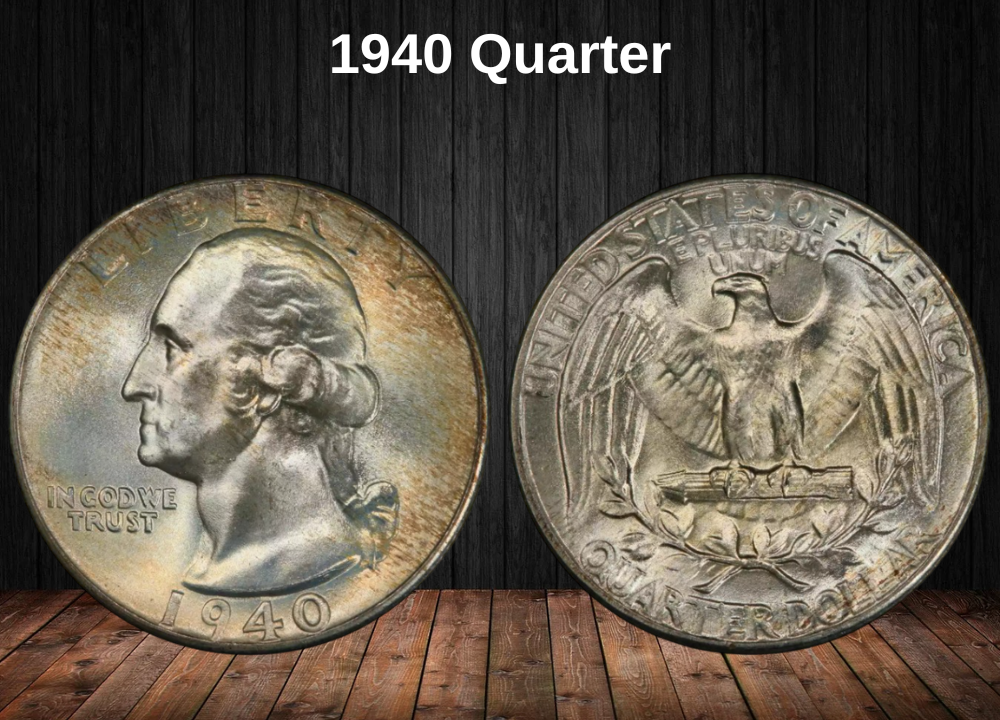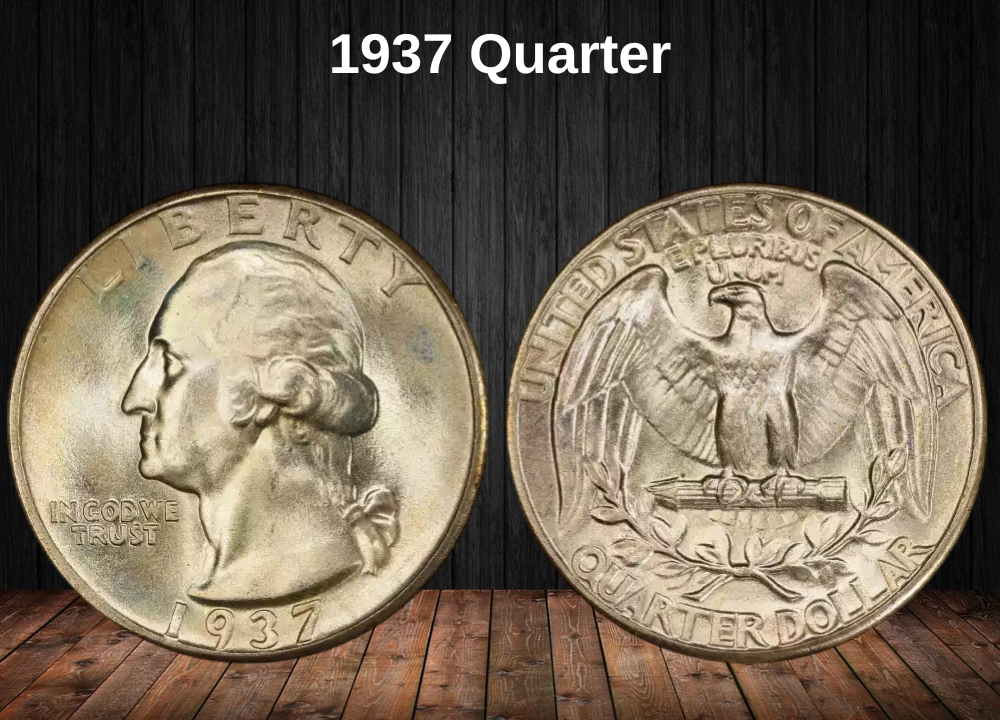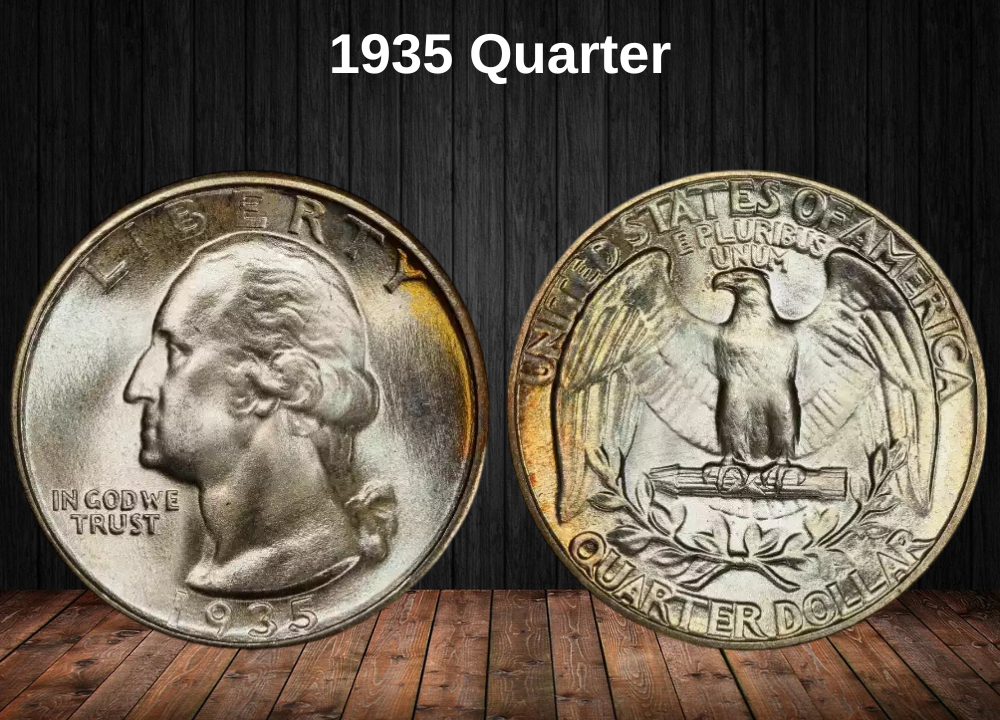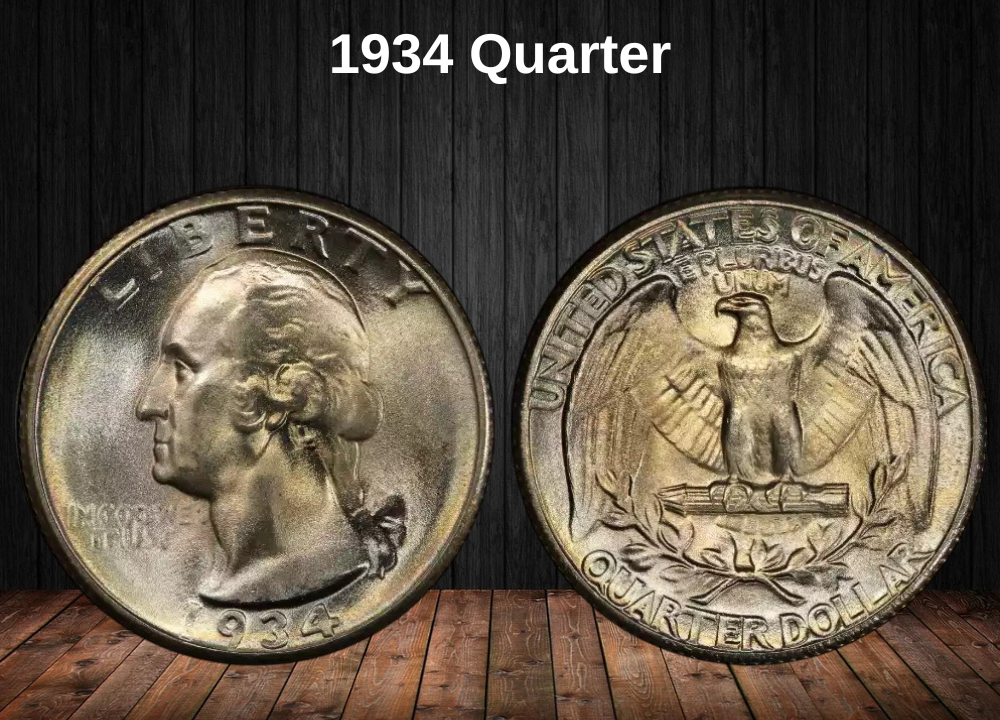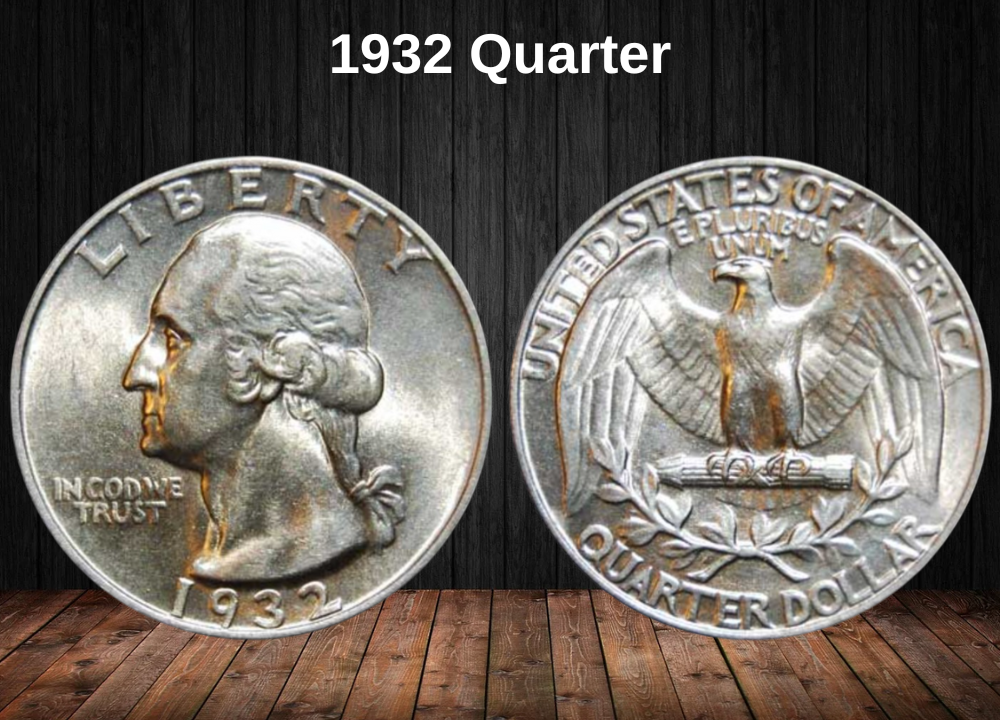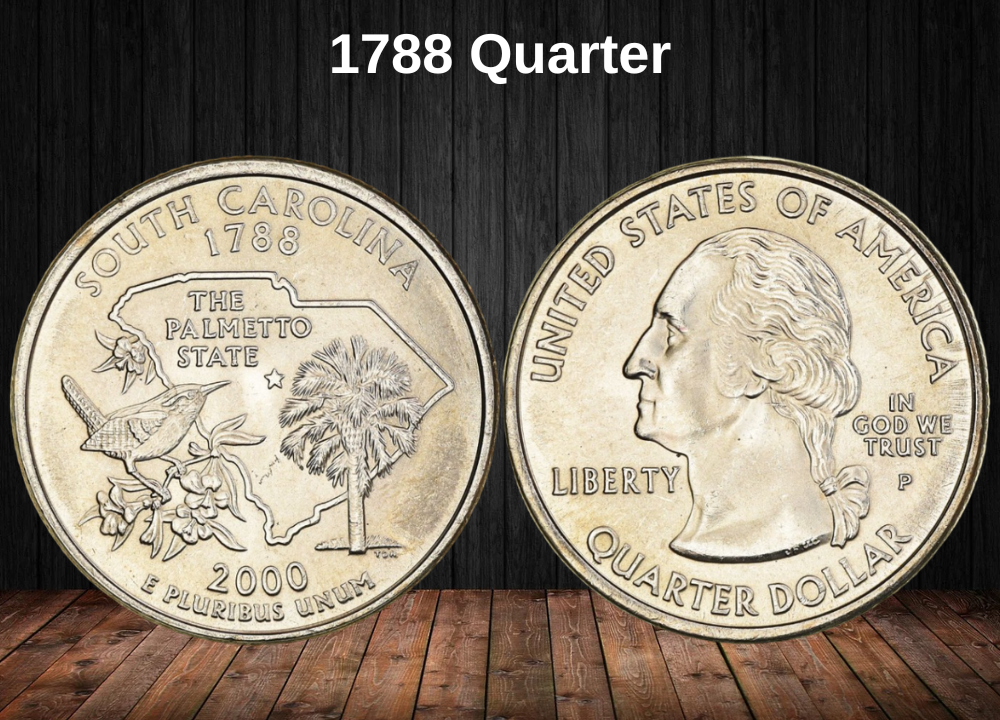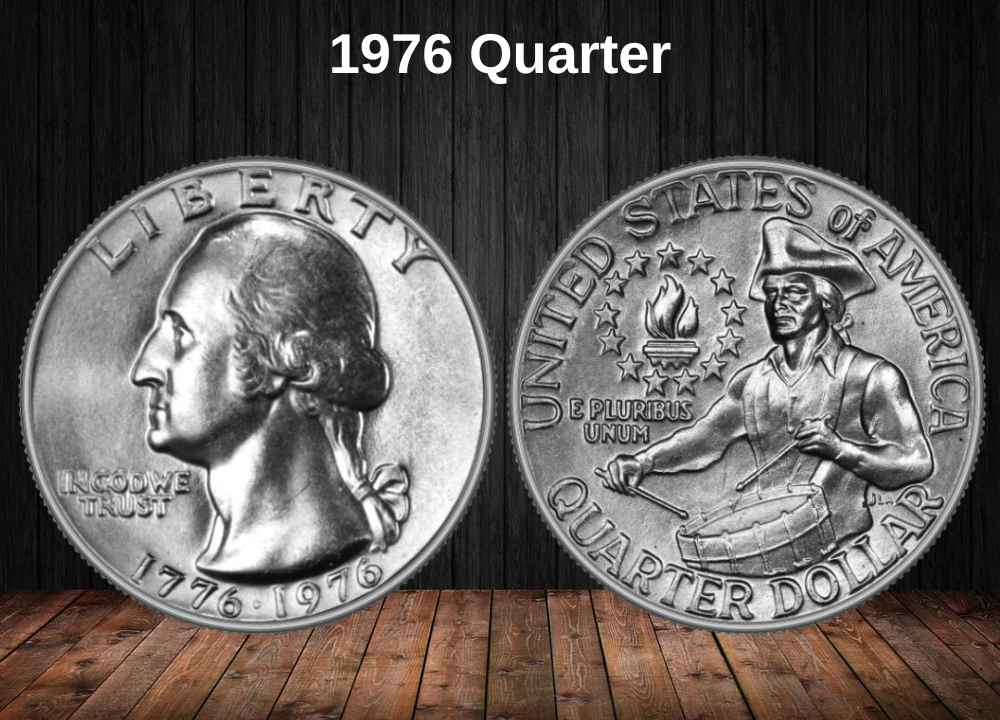Wondering what your 1939 Washington quarter is worth? While some people assume old coins aren’t valuable beyond 25 cents, the reality is very different. Depending on mint mark, condition, and rarity, a 1939 quarter can range in value from just a few dollars to several hundred.
The year 1939 falls into the heart of the early Washington quarter series, struck in 90% silver at three different mints—Philadelphia, Denver, and San Francisco—plus a small run of Proofs from Philadelphia. With silver content alone giving these coins intrinsic value, it’s the higher grades and rare errors that drive the biggest premiums.
1939 Quarter Value by Variety
| Type | GOOD | FINE | AU | MS | PR |
|---|---|---|---|---|---|
| 1939 (No Mint Mark, Philadelphia) | $7.00 | $7.17 | $10.50 | $76.43 | — |
| 1939-D (Denver) | $9.00 | $13.33 | $28.00 | $75.50 | — |
| 1939-S (San Francisco) | $8.00 | $18.67 | $80.00 | $201.67 | — |
| 1939 Proof (Philadelphia) | — | — | $64.00 | — | $145.33 |
History of the 1939 Quarter
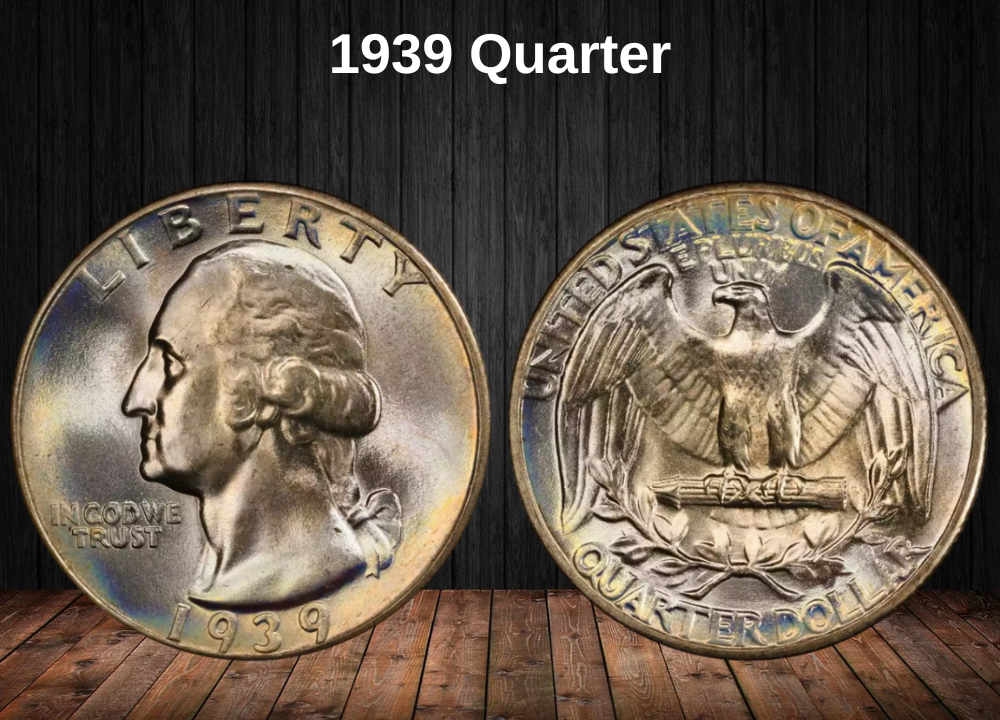
The 1939 Washington quarter belongs to the early chapter of the series, first introduced in 1932 to celebrate the bicentennial of George Washington’s birth. By 1939, John Flanagan’s portrait of Washington on the obverse and his heraldic eagle reverse were firmly established as standard features of U.S. coinage.
Struck in 90% silver and 10% copper, the 1939 quarters were minted at three locations:
- Philadelphia (no mint mark) – the workhorse of the year, producing about 33 million coins
- Denver (D) – a smaller run, making it less common
- San Francisco (S) – the lowest mintage of the year, giving it special collector appeal
The 1939-S stands out as one of the scarcer early Washington quarters, while the Philadelphia issue is the most common. Proofs were also struck at Philadelphia, with extremely limited production for collectors.
Historically, 1939 represents a moment of stability in U.S. coinage, just before the outbreak of World War II dramatically changed the nation’s economy and society. For collectors today, these silver quarters serve as both historical artifacts and stores of intrinsic metal value.
Is Your 1939 Quarter Rare?
Based on scarcity rankings within the Washington quarter series:
- 1939 Proof – Rare, ranked 31st overall
- 1939-S – Scarce, ranked 46th
- 1939-D – Scarce, ranked 85th
- 1939 (No Mint Mark, Philadelphia) – Scarce, ranked 96th
Key Features of the 1939 Quarter
By 1939, John Flanagan’s Washington quarter design was well established, struck at three U.S. Mints—Philadelphia, Denver, and San Francisco—with an additional small run of proofs produced exclusively at Philadelphia. This year is especially notable as one of the final pre–World War II silver quarter productions.
Obverse Design
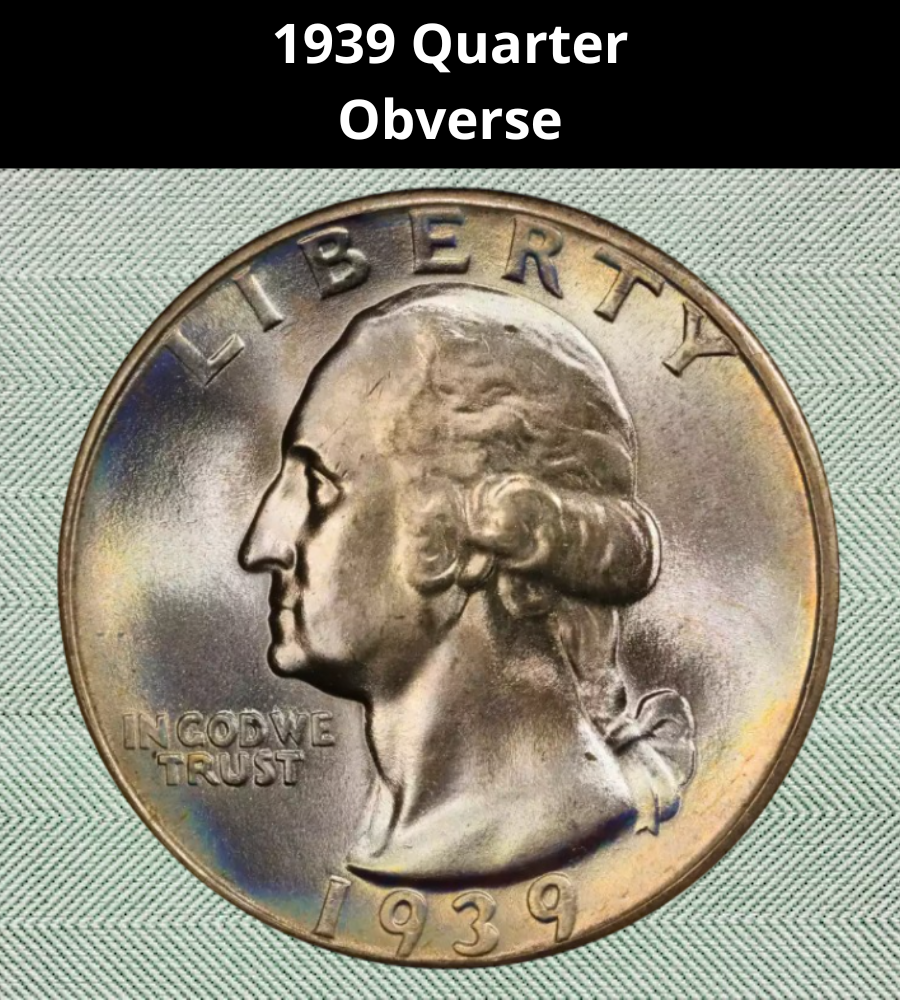
The obverse features a left-facing bust of George Washington, framed by:
- LIBERTY arched across the top rim
- IN GOD WE TRUST beneath Washington’s chin
- The date 1939 centered at the bottom
- Designer initials JF at the base of the neckline cut-off
Reverse Design
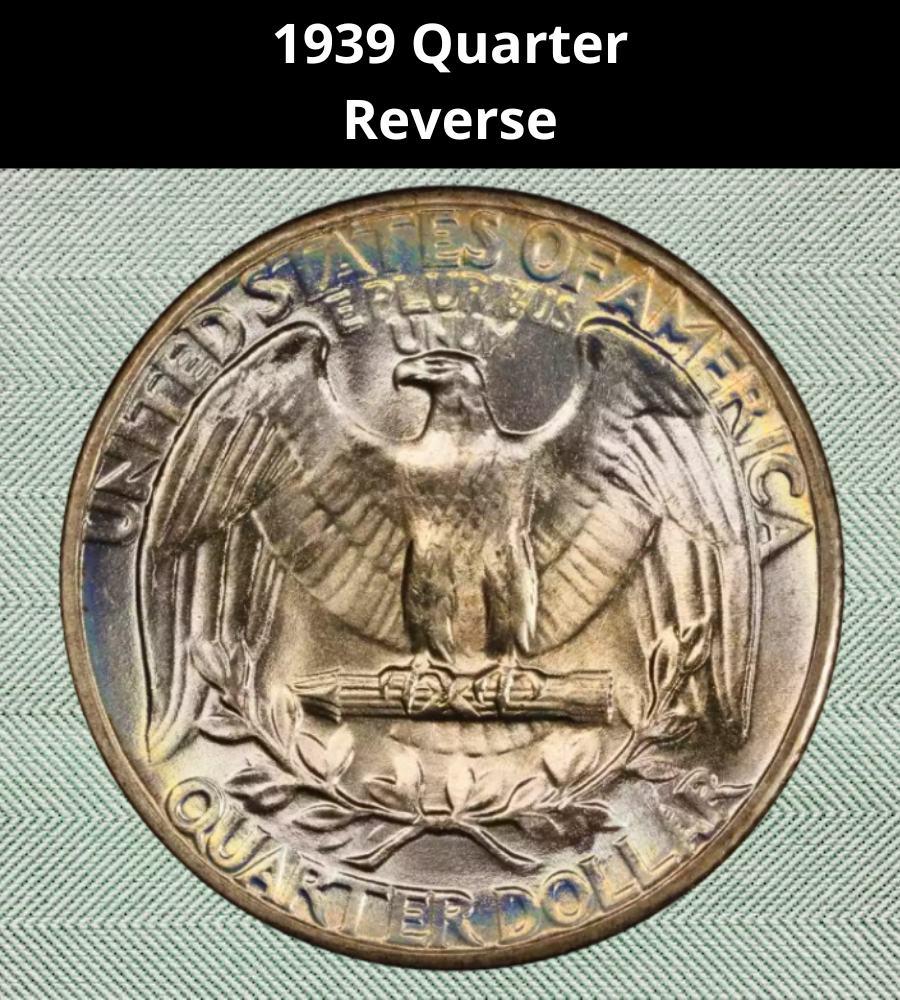
The reverse depicts a heraldic eagle with wings outstretched, clutching arrows and an olive branch to symbolize both strength and peace. Surrounding inscriptions include:
- UNITED STATES OF AMERICA along the top
- E PLURIBUS UNUM above the eagle’s head on a ribbon
- QUARTER DOLLAR across the bottom rim
- A mint mark (“D” for Denver, “S” for San Francisco, or none for Philadelphia) beneath the eagle’s tail feathers
Other Specifications
The 1939 quarter carried the standard silver composition used before 1965:
- Composition: 90% silver, 10% copper
- Weight: 6.25 g (0.2009 troy oz)
- Silver Content: 0.1808 troy oz (5.62 g)
- Diameter: 24.3 mm (0.956 in)
- Thickness: 1.75 mm (0.068 in)
- Edge: Reeded, with 119 reeds
These silver quarters have both collectible and intrinsic bullion value, making them appealing to a wide range of collectors and investors alike.
1939 Quarter Grading
Grading a 1939 Washington quarter requires close attention to the design’s most wear-prone elements.
Obverse Grading Points
- Washington’s hair details: The curls above the ear are among the first to wear down.
- Cheek and jawline: Flattening or smoothing here signals circulation.
- Facial sharpness: Higher grades retain crisp contours, while lower grades show blurring.
- Motto “IN GOD WE TRUST”: Should remain fully legible in Fine and above; clarity in the letters helps separate AU from Mint State.
Reverse Grading Points
- Eagle’s breast feathers: A primary high point—loss of detail here is the clearest indicator of wear.
- Wings and tail feathers: Look for sharp definition; feather separation disappears quickly in circulated coins.
- Arrows and olive branch: The tips often soften first in mid-grade examples.
- “E PLURIBUS UNUM” ribbon: Weakness in the folds and letters is an early sign of wear.
Circulated vs. Mint State
- Circulated coins: Show progressive smoothing of Washington’s cheek and hair, plus loss of feather detail on the eagle’s breast.
- Mint State coins: Should retain sharp feather lines, crisp hair detail, and strong luster. Any breaks in these areas or excessive bag marks will reduce the grade, even without actual wear.
1939 Quarter Value Guides
1939 No Mint Mark Quarter Value
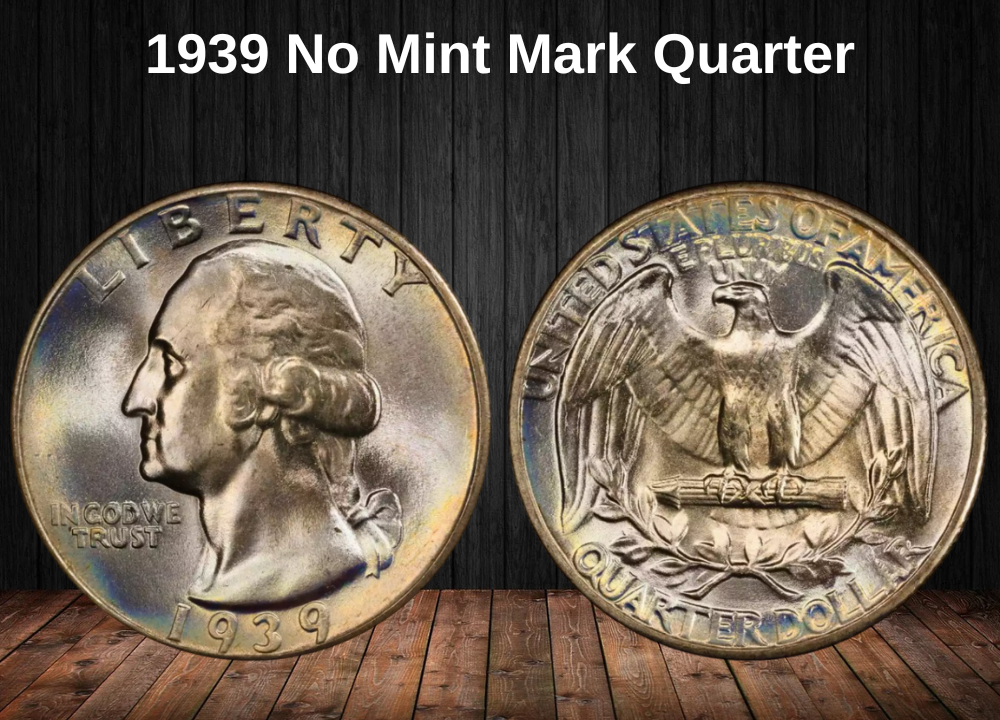
The 1939 Philadelphia quarter (no mint mark) marks the largest Washington quarter mintage of the late 1930s, with more than 33.5 million coins struck.
While common in lower grades, the issue stands out for its exceptional strike quality and lustrous surfaces, reflecting Philadelphia’s superior production standards of the era. This makes it one of the best “type coins” for collectors who want a sharp, early Washington quarter without the premium attached to scarcer mintmarks.
Philadelphia’s advanced minting equipment consistently delivered crisp hair detail on Washington’s portrait and well-defined eagle feathers on the reverse. As a result, gem-quality examples are more accessible compared to their Denver and San Francisco counterparts.
1939 No Mint Mark Quarter Auction Records
| Date | Auction House | Grade | Price |
|---|---|---|---|
| 01/25 | SB | MS65 | $45 |
| 11/24 | SB | MS68 | $1,800 |
| 08/24 | HA | MS68 | $1,920 |
| 07/24 | SB | MS67 | $192 |
| 05/24 | HA | MS68 | $1,333 |
| 02/24 | HA | MS68 | $2,640 |
| 08/23 | SB | MS67 | $384 |
| 07/23 | HA | MS67 | $325 |
| 07/23 | HA | MS67 | $384 |
| 06/23 | HA | MS66 | $69 |
1939-D Quarter Value
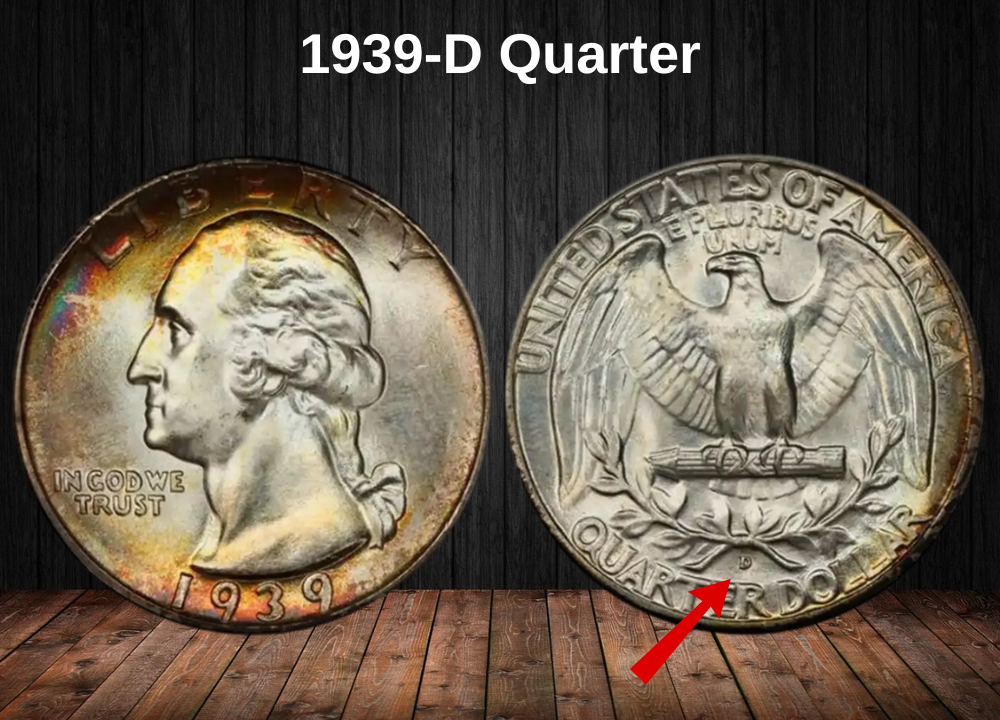
The 1939-D Washington quarter represents one of the best-preserved Denver Mint issues of the entire series. With a mintage of 7.09 million coins and a survival rate near 10%, it occupies the perfect middle ground between availability and scarcity that serious collectors look for.
Denver’s production quality in 1939 was unusually strong. Coins typically display sharp strikes, bold luster, and well-defined details that often rival Philadelphia’s output. The “D” mint mark beneath the eagle is bold and consistently placed, making authentication straightforward.
What further sets the 1939-D apart is its consistency in grading. Unlike many Depression-era issues, fewer problem coins exist, giving collectors a higher chance of finding well-preserved examples across the spectrum.
1939-D Quarter Auction Records
| Date | Auction House | Grade | Price |
|---|---|---|---|
| 01/25 | HA | MS68 | $3,096 |
| 08/24 | HA | MS68 | $2,280 |
| 06/24 | SB | MS66 | $65 |
| 05/24 | HA | MS68 | $4,320 |
| 07/23 | SB | MS66 | $120 |
| 06/23 | HA | MS65 | $204 |
| 05/23 | HA | MS66 | $210 |
| 04/23 | DL | MS67 | $461 |
| 04/23 | HA | MS67 | $360 |
| 04/23 | HA | MS67 | $1,440 |
1939-S Quarter Value

The 1939-S Washington quarter is the scarcest regular-issue variety of the year, with a modest mintage of just 2.63 million coins from the San Francisco Mint. With an estimated 10% survival rate, it stands out as the most condition-sensitive issue of the three 1939 circulation strikes.
San Francisco quarters from this era are known for their distinctive luster and slightly softer strikes, especially compared to Philadelphia and Denver. Despite this, the bold “S” mint mark beneath the eagle remains a reliable diagnostic and adds to the issue’s appeal.
The 1939-S is considered a semi-key date in the Washington quarter series—scarcer than most, but still more affordable than the top-tier key dates. This makes it especially popular with both type collectors seeking variety and specialists building complete sets.
1939-S Quarter Auction Records
| Date | Auction House | Grade | Price |
|---|---|---|---|
| 02/25 | SB | MS67 | $432 |
| 01/25 | SB | MS66 | $360 |
| 12/24 | SB | MS65 | $216 |
| 08/24 | SB | MS65 | $125 |
| 02/24 | HA | MS67 | $3,120 |
| 12/23 | HA | MS66 | $384 |
| 08/23 | SB | MS65 | $192 |
| 07/23 | SB | MS64 | $168 |
| 06/23 | HA | MS65 | $408 |
| 06/23 | HA | MS65 | $154 |
1939 Proof Quarter Value

The 1939 Proof Washington quarter stands as one of the rarest and most coveted issues in the entire series, with an extremely limited mintage that secures its status as a true numismatic treasure.
Struck exclusively at the Philadelphia Mint using specially prepared dies and polished planchets, each proof coin displays mirror-like fields and frosted devices, producing a sharp cameo contrast. Unlike regular business strikes, these proofs were struck multiple times under higher pressure and individually handled, resulting in coins with exceptional detail and pristine surfaces.
What makes the 1939 Proof especially significant is its status as a pre-war proof—produced just before the Mint suspended proof coinage from 1943 to 1949 due to World War II. This historical context, combined with its rarity, makes the 1939 Proof a cornerstone piece for advanced collectors and registry sets.
1939 Proof Quarter Auction Records
| Date | Auction House | Grade | Price |
|---|---|---|---|
| 01/25 | HA | PR68 | $1,860 |
| 12/24 | SB | PR67 | $312 |
| 08/24 | SB | PR65 | $72 |
| 08/24 | HA | PR68 | $1,800 |
| 08/24 | SB | PR66 | $96 |
| 08/24 | SB | PR65 | $85 |
| 06/24 | SB | PR67 | $216 |
| 06/24 | SB | PR67 | $456 |
| 06/24 | HA | PR68 | $1,806 |
| 06/24 | SB | PR67 | $336 |
Market Insight
Auction results show that demand for 1939 Proof quarters is highly selective, with each offering drawing competitive bidding. High-grade survivors in PR68 and above consistently set new benchmarks for the series, often crossing the $1,800–$2,000 mark.
Rare 1939 Quarter Error List
1. 1939-S Doubled Die Obverse (FS-101)
The 1939-S Doubled Die Obverse (FS-101) is widely considered the crown jewel of 1939 Washington quarter errors. This dramatic variety features bold doubling across the entire obverse, making it one of the most desirable errors of the late 1930s.
The strongest doubling appears in:
- LIBERTY, where each letter shows clear separation
- The date 1939, with overlapping digits
- Washington’s hair details, especially above the ear
This error was created when the San Francisco Mint’s working die received multiple misaligned impressions from the master hub, producing a striking visual effect.
The rarity is amplified by the fact that the base coin—the 1939-S quarter—already has a relatively low mintage. Combined with this dramatic mint error, the FS-101 becomes an exceptionally scarce variety.
Most known examples show some degree of circulation wear, making even mid-grade specimens highly valuable. Certified Mint State survivors are extraordinarily rare and command strong five-figure prices when they appear at auction.
2. 1939-D/S Over Mintmark (FS-501)
The 1939-D/S FS-501 is one of the most fascinating varieties of the Washington quarter series, featuring a Denver “D” mint mark punched directly over a San Francisco “S.”
Under magnification, the underlying “S” can still be seen peeking beneath the stronger “D”, creating a distinctive and unmistakable double mintmark. This error is officially recognized in the Fivaz-Stanton Cherrypickers’ Guide, giving it added authority and demand among specialists.
The origin of this variety ties into the Mint’s resource conservation practices of the late 1930s. With the nation already shifting into a wartime economy, mints occasionally reused or repurposed dies to reduce costs and streamline production. In this case, a San Francisco die was adapted for Denver use, leaving behind this remarkable over-mintmark.
Where to Sell Your Quarter Coin?
Now that you know the value of your quarter, the next step is deciding where to sell it. There are several trusted options—both online and in person—that can help you get the best price depending on your coin’s rarity and condition.
To see the full list of recommended places, along with their advantages and disadvantages, check our complete guide on where to sell your quarter coins.
FAQ About the 1939 Washington Quarter
1. Why is the 1939 Quarter historically significant?
The 1939 Quarter comes from the early years of the Washington series, during a period when the U.S. economy was recovering from the Great Depression and approaching World War II. These coins, struck in 90% silver, represent both historical and numismatic value.
2. Which mints produced the 1939 Quarter?
The coin was struck at Philadelphia (no mint mark), Denver (“D”), and San Francisco (“S”). The 1939-S is scarcer in higher grades, while the 1939-D is also collected for certain recognized varieties.
3. What are the key varieties of the 1939 Quarter?
The most famous is the 1939-S Doubled Die Obverse (DDO FS-101), which shows dramatic doubling on “LIBERTY,” the date, and Washington’s hair. Another notable variety is the 1939-D/S Overmintmark (FS-501), where a “D” mint mark was punched over an “S.” Both are highly prized by collectors.
4. How much is a 1939 Quarter worth?
Common circulated examples are typically worth $5–$20, slightly above silver melt value. However, Mint State coins can range from $100–$500, and rare varieties like the DDO or D/S can sell for thousands of dollars depending on grade and demand.
5. What should collectors look for when evaluating a 1939 Quarter?
Key indicators include the clarity of the motto IN GOD WE TRUST, sharp details in Washington’s hair and the eagle’s feathers, and originality of surfaces. For varieties, close inspection of the date, lettering, and mint mark under magnification is essential. Certification from PCGS or NGC is highly recommended for valuable pieces.

